More Than Just a Pretty Picture
An appraising look at Jean-François Laguionie’s latest work of art, The Painting.
From this side of the Atlantic, it can be easy to lose sight of the fact that feature animated projects need not revolve around spunky princesses, spunky sass-talking animals or courageous yet irreverent super-heroes. Luckily, the creative capitals of Europe can always be relied upon to generate inventive, artisanal films to reignite the flame of your animated passion—and the latest from toon auteur Jean-François Laguionie is no exception.
Set within the universe of an artist’s atelier in the first half of the 20th century, The Painting (Le Tableau in French) centers on the figures in an unfinished painting, separated into three castes: the completed Alldunns who claim superiority, the incomplete Halfies and rough charcoal Sketchies. In a Romeo-and-Juliet twist, an Alldunn named Ramo (voiced by Adrian Larmande) falls for a Claire (Chloe Berthier), a Halfie, and they join up with the young, inquisitive Lola (Jessica Monceau) to seek out their Painter and find out why he created the divided races. Their search takes them beyond the edges of the canvas, into the strange frontiers of the artist’s studio.
A co-production of France’s Blue Spirit and Belgium’s Be-Films, and penned by Laguionie and Anik Le Ray (Eleanor’s Secret), The Painting is a graphically ambitious and narratively compelling exploration of tolerance and repression. Blue Spirit’s team in Angoulême handled the compelling CG animation with sister studio Sinematik in Bruxelles. While The Painting is Laguionie’s fourth animated feature outing (he also directed The Island of Black Mór, A Monkey’s Tale and Gwen, a Book of Sand), it was the first full-length film attempt by the studio. And their efforts certainly paid off: Since its theatrical premiere in France last November, The Painting has garnered immense critical praise and was even nominated for the animated film 2012 César Award. And later this year, thanks to New York distributor GKids, American audiences will also be able to jump into the film’s painterly landscape.

Stroke by Stroke
The foundations of The Painting began to take shape several years ago, when writer Le Ray was inspired to craft a story about the relationship between a painter and his model, Laguionie explains.
“Later, a kind of political fable—that of the Alldunns, Halfies and Sketchis—was added to the theme. The richness of the film is perhaps the interpretation of these two ideas.”
The director and screenwriter previously collaborated on 2004’s 2D pirate adventure The Island of Black Mór, and with the way the story of The Painting evolved, it is clear that this was the kind of fantastical journey that could only be done justice to in animation.
As Armelle Glorennec, who produced the film with Éric Jacquot, explains, it took a lot of trial and error to bring this painted world to life:

“After doing many tests… and because our studio’s specialty is 3D, and because we wanted to do the work in France and Belgium (and in our studios), we preferred the 3D animation rather than 2D.”
The result of Blue Spirit’s efforts is an interesting blend of the graphic, colorful “flat” CG of the canvas world and the digitally crafted photorealism of the artist’s studio—which in turn is full of pieces paying homage to Chagall, Modigliani, Picasso and Matisse. Above all, Laguionie encouraged the artists to attain a subtlety that would preserve the power of the story.
“In my opinion, the animation must not draw attention to itself,” he explains. “If it’s too spectacular, it destroys the poetic quality of the film. Along with the lead animator, Lionel Chauvin, we strove to reduce the movement of the camera, in order to deliver the ‘theatrical’ quality we were looking for. Ultimately, we wanted to imitate the look of an oil painting, through the use of digital software—and the talents of the film’s artistic team. It wasn’t easy. I hope we have succeeded.”
Over the two-year financing stage, Laguionie personally designed each of the characters by hand and embarked on an intensive storyboarding process. The artist created more than 2,000 large-scale drawings, which he then photographed in a manner of denoting close up or wide shots of each scene. These were then uploaded to a computer where Laguionie timed each scene and recorded dialogue over the digital boards.

For Glorennec and the Blue Spirit team, choosing such a distinct effect for their first feature effort proved challenging, but she says the artists in Angoulême and Bruxelles were invigorated by each trial along the way.
“There was no particularly tough aspect in this production. In fact, throughout the production, the technical and artistic demands challenged each other, raising questions and providing solutions in a back-and-forth process that would push the movie forward,” says the producer. “It worked like a living matter, in that each aspect of the production was fueling the others with new ideas and possibilities. It was really thrilling!”
Glorennec credits the special chemistry and ease of communication between Laguionie and the creative teams with turning the animation obstacles into surmountable challenges.
In the end result, the animation team was able to model each character in CG before layering on the painted effect, creating graphic beings who could leap out of the 2D world of their canvas and move in a three dimensional space.

The director, whose previous features employed more traditional methods, notes that new technologies helped not only with achieving the film’s particular aesthetics, but with the entire production flow.
“The technology utilized for this film is much more advanced … It allowed me to delegate more management to the teams and for me to concentrate more on the staging, editing and post production. Indeed, I believe that animation is a truly collaborative creation.”
All in all, after several years of development, The Painting came together over roughly 15 months of pre-production and a year of production—all on a budget of about 4 million euros (about $5.3 million).
For Glorennec, the resulting film—and the positive critical and audience response—is a tour de force, and the producer is rightly proud of crafting such a unique, beautiful world for a first full-length project.

“Anik [Le Ray] and I do not have the pretention to deliver a ‘message,’” Laguionie demurs when asked how he hopes his film affects those lucky enough to catch a U.S. screening, “But the film addresses everyone—children, adults—and speaks about tolerance and freedom. It speaks also of creation, in the larger sense of the word, and its resulting liability. It’s possible to find different issues and themes in the movie, depending on your own point of view.”
In the words of a critic from The Painting’s era of inspiration: I don’t know much about art, but I know what I like.
The Painting had its international premiere at the N.Y. Int’l Children’s Film Festival in March. GKids will handle U.S. theatrical releasing. Visit www.gkids.com for more information.
Korra: The Next Airbender!
From the minds behind Nickelodeon’s acclaimed Avatar comes an exciting new chapter with a brand new heroine, The Legend of Korra.
In the trend-conscious world of TV animation, it is rare that a show comes along that really shakes things up. But that is what happened back in 2005 when Film Roman alums Bryan Konietzko and Michael DiMartino’s Avatar: The Last Airbender first appeared on Nickelodeon.
Like Spaghetti Westerns or Korean tacos, Avatar cleverly gleaned influences from around the world to create its blend of fantastical mythology, martial-arts action and top-notch anime-influenced animation design. After three seasons, fans sadly bid the show adieu in 2008—but now these key elements have been recombined into a highly anticipated sequel series, The Legend of Korra.
Korra began to take shape when Nickelodeon approached the creative duo in November of 2009 about continuing the Avatar universe. After only a few short months hammering out the concept, DiMartino and Konietzko were back at the studio in February, where they teamed up with co-executive producer Joaquim Dos Santos and supervising director Ki Hyun Ryu to fine tune the story and visuals. By summer, the boys were back in the production trenches.
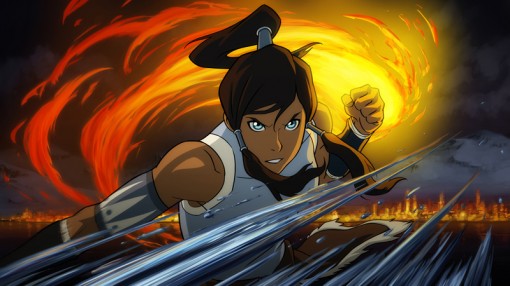
“When Ryu and I cam on board we pretty much hit the ground running with visual development,” Dos Santos recalls. “To be honest, it’s such a blur that I’m not sure how much time we took before actual pre-production started … As far as my experience goes, Korra was probably the most time I’ve had for development and it still seemed too short!”
Dos Santos served as a storyboard artist on Avatar, and his directing credits include Justice League, G.I. Joe: Resolute and several DC Showcase shorts; Ryu also worked on Avatar in the animation and design departments.
Going for Girl Power
The clearest contrast between the two series is the new face of the Avatar. While Aang was a reluctant 12-year-old boy struggling with his fate, Korra is a headstrong teenager who relishes her role as “The Chosen One.” While her physical prowess and confidence have made her a master at bending water, earth and fire, her underdeveloped spiritual side prevents her from succeeding at airbending and realizing her full potential.
As DiMartino relates, he and Konietzko wanted to match their experience level with a more artistically and narratively mature series.
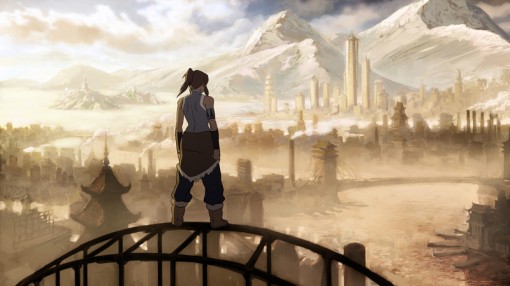
“We also wanted to explore an Avatar who was the exact opposite of peaceful Aang, so we chose a hot-headed teenage girl from the Water Tribe. Her ‘punch first and ask questions later’ attitude opened up a whole new world of story possibilities.”
For inspiration, Mixed Martial Arts fight fan Konietzko referenced female fighter Gina Carano. “Once we had the idea of a tough, athletic girl, her personality took shape pretty quickly,” he recalls. Women competitive snowboarders also served as inspiration for the look and attitude of the character.
“That really helped inform [Korra’s] design,” says Dos Santos. “She’s got a really tough look. The baggy pants and low-hanging fur wrap against her athletic upper body really bring those two elements together well.”
A rough-and-tumble heroine like Korra is a rarity for the TV animation world, and Nickelodeon is confident that fans will cheer her on through her adventures just as they did with Aang. As Brown Johnson, president of animation for Nickelodeon and MTVN kids and family group, notes:
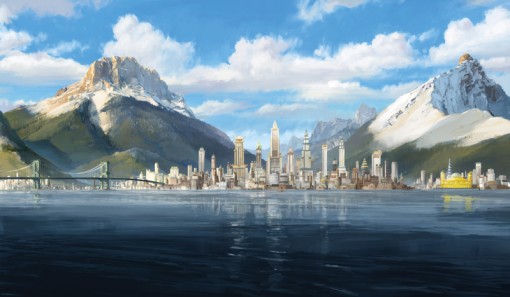
“Korra is a terrific heroine, for boys and for girls. Like all great action heroes, she combines great heart, kick-butt powers—and the idiotic mistakes of a typical teen.”
Rebuilding the World
Although Korra takes place 70 years after the events of the original series, the producers wanted to ensure the world and story felt familiar to audiences. Fans can expect the familiar blend of humor, drama, action and relationships to bubble around the new Avatar. Additionally, Avatar composers The Track Team have returned to give the music and sound design a familiar feel.
But, as DiMartino points out, the creators also strove to up the ante across the board for this series, adding layers of sophistication to the storytelling, artwork and animation to do justice to the more mature feel of the show.
As Konietzko explains, the duo were originally after a 12-episode season when they pitched Avatar back in 2002, but the network was running on 20 episode cycles. With Korra, they have their ideal timeframe at last.
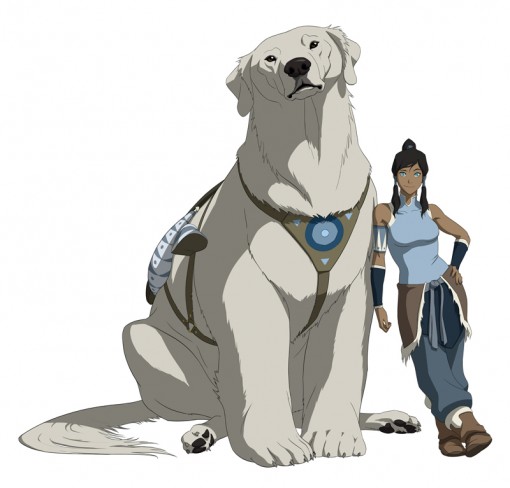
“[Nickelodeon] came to us with 12 episodes, and we were relieved. I know some fans just want more, more, more, but we are primarily concerned with the quality of the storytelling and animation, and shorter seasons are the best way for us to achieve that … The stories are leaner, more focused on one driving storyline.”
“Tonally, things have shifted just a bit darker as well,” Dos Santos adds. “The visual style plays on the theme that the world is going through the Avatar equivalent of the Industrial Revolution. The character designs along with the color direction really accentuate that idea.”
While the original series constantly shifted locales as Aang and his comrades made their journey across the various nations, Korra takes place inside the confines of the steam-punk influenced Republic City—what DiMartino describes as an early, conscious decision meant to cut down the design workload, although building up a huge metropolis in which to set the action proved just as challenging!
From an artistic standpoint, the creators wanted to infuse the new series with a stronger sense of art direction and more “style,” while still maintaining the feel of the Avatar world. For season one, Konietzko shared art direction duties with Dos Santos and Ryu, and sought to incorporate their individual styles into the character design to achieve a more sophisticated look. The background style also underwent a facelift:
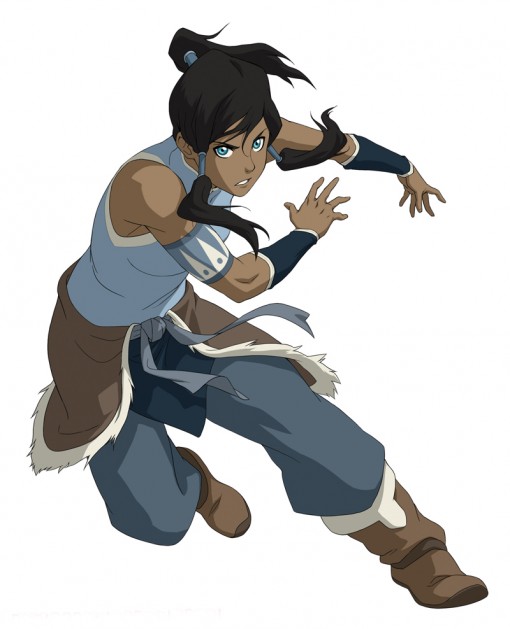
“I was adamant that the background paintings have more of a painterly look, more like concept designs,” Konietzko explains. “We found some young and energetic painters, Fred Stewart and Emily Tetri, and developed a looser painting style for the show with them.”
Konietzko adds that additional steps in the art direction process were incorporated to improve the lighting and create a more cinematic look.
“Atmosphere, atmosphere, atmosphere!” Dos Santos seconds. “It’s been a challenge, but building room in the schedule to allow for real lighting direction and compositing has been something that we are really proud of. It’s also something that oftentimes gets overlooked in U.S. TV animation. I’m really proud of the fact that Republic City feels like a real place.”
The Art of Toonbending
Aiding the crew in achieving these new levels of sophistication are the incredible digital animation technological advances that have occurred since 2008 when Avatar wrapped. In fact, Korra’s 2D animation (augmented with CG effects) is fairly ground-up digital. The team has incorporated Toon Boom software into the storyboard process, and can now be found hunched over Cintiq drawing tablets rather than sheaves of paper.
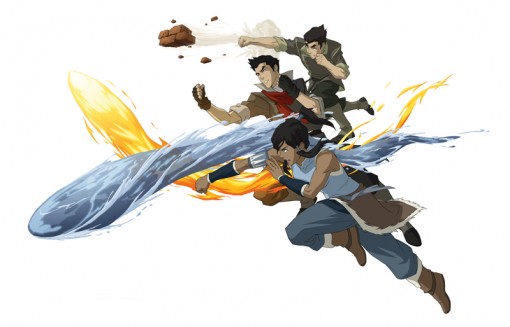
“The transition to working digitally all the way down the production pipeline has really allowed for us to take a ‘pre-viz meets storyboard’ approach to our storytelling,” Dos Santos enthuses. “We can share assets with our other departments and get a feel for the timing and tone almost instantly. For our more complex shots, we’ve added an amazing After Effects artist to tour crew who can interpret our rough staging and really build an amazing sequence with subtle camera work and lighting. It really helps get our ideas across to the animators.”
The animation team is even utilizing Google SketchUp to digitally build rough sets, allowing them to play around with camera angles virtually and pick the coolest shots before diving into the thick of storyboarding.
Despite these technological facilitations and fewer episodes per season to crank out, Konietzko says that serial animation’s old nemesis, time, is still one of their largest challenges.
“There is simply never enough time. We’re trying to improve the quality of all aspects of this series compared to the original series, so we never stop making it hard on ourselves!”
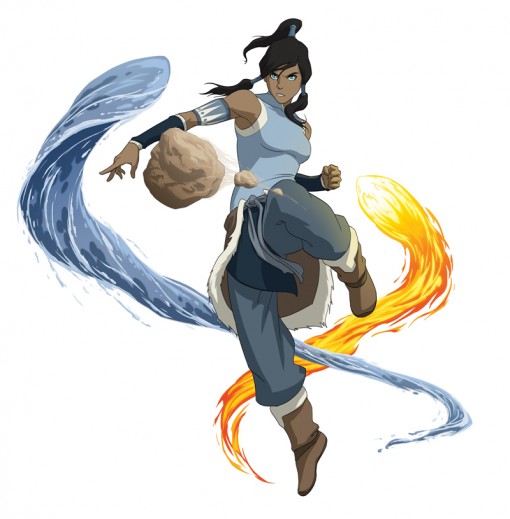
Another double-edged sword during this production is the increased collaboration with the talented Korean animation team at Studio Mir, which also worked on Avatar.
“We did a lot more pre-production in Seoul … We’ve always collaborated closely with the Korean artists, but even more so on this series—they really became an extension of our crew in Burbank. But the biggest challenge was simply dealing with the distance and communication. Many times we wished we could explain a storyboard or animation idea directly to someone sitting down the hall, rather than halfway around the world,” DiMartino admits.
Dos Santos seconds DiMartino’s logistical qualms, adding that certain cultural differences can make it difficult to get the correct ideas across, no matter how talented the artists are.
“Thankfully there was an already established working relationship with the amazing artists and animators at Studio Mir. But even so, I remember them struggling initially with the idea that Korra was so muscular. We really wanted to make a point of the fact that she is not your traditional rail-thin girl. She’s an athlete and tough, but still beautiful.”
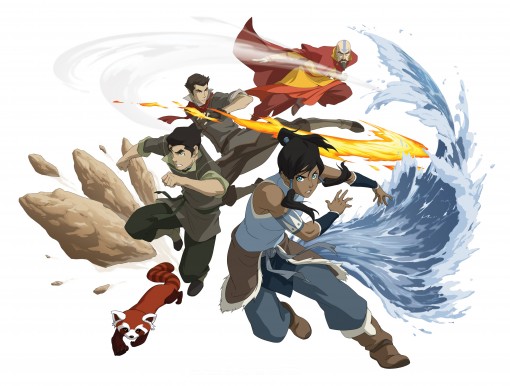
Despite a few bumps in the road, all three producers say they have enjoyed the process immensely. For DiMartino and Konietzko, the chance to write all of the first season together and watch the world and the characters who populate it take shape through the story and design phases has been both fun and challenging—in a good way. For Dos Santos, Korra has allowed him to take some of his biggest artistic leaps. All credit the talented crews at Nickelodeon and in Korea with easing the growing pains of this ambitious project.
As Dos Santos sums up: “When the dust settles—and we get some sleep—we’ll have an amazing show and we’ll all have leveled up!”
Nickelodeon unveils The Legend of Korra on April 14, at 11:00 AM (ET/PT).
An Interview with Disney/Pixar President Dr. Ed Catmull
There are a handful of people in this world who represent everything that the CG animation community has been able to achieve in the past few decades. Pixar co-founder and president Dr. Ed Catmull, who is also the president of Disney Studios, is one of the top visionaries in our field who has played a huge role in expanding the role of computer animation in our daily lives and building a company that has set sky-high standards in what our favorite art form can deliver. We were lucky to chat with this five-time Oscar winner about his vision for his studio, leadership philosophies and where he would like to see animation take us in the next decade:
Animag: We’re sure the first question everyone asks you is, how are you able to find enough hours in a day to run both Disney and Pixar studios?
Ed Catmull: Well, I have a young child at home, so I don’t have a lot of speaking engagements. John Lasseter and I go back and forth a lot, and what we set out to do is to make sure the studios are quite distinct from each other. We don’t want them to merge; that would definitely be the wrong approach. Each should have its own personality. Each one of them (DisneyToon Studios, Pixar, Disney Animation) have their own general managers and they all do a fantastic job.
What was important for us was to make sure that the directors have a supportive community. They have their own strengths and they own each other’s successes. I would say that’s the key to making it work. They all help solve the problems. Basically, we have filmmakers giving notes to filmmakers. Philosophically, the director—whether they’re at Disney or at Pixar—should have the final word on their movie.
Animag: In the past, you have talked about your approach to management and how the peer-driven review sessions are largely responsible for having a positive creative environment at the studios. Can you elaborate on that for us?
Catmull: Sure, that approach is important because what happens is that you don’t have people worrying about their projects getting killed or screwing up. By having the right kind of relationship, the giving of the notes and taking of the notes are focused on the film and not some other agenda. We kept the studios separate. You see, every film gets in trouble at some point. When the film gets in trouble, they reach out for help. I remember when we were first acquired by Disney, Ratatouille got into trouble, and Bolt got into trouble. We had three people at the other studio who could have helped out, but we said no, you can’t help the other studio. We drew a hard line. The consequence was that when Disney made Bolt, nobody bailed them out. When Ratatouille got into trouble, nobody got them bailed. We want to have a culture where there’s a strong local ownership to the films that are made.
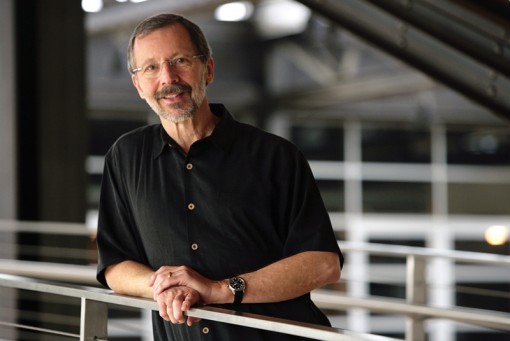
Animag: When looking back at this past quarter of a century, did you ever imagine that placing polygon vertices through a model of your hand could lead to movies as complex and breath-taking as Toy Story 3 and Brave?
Catmull: It’s interesting that your magazine is also 25, the same age as Pixar! Frankly when we started, it was just barely within conception that we could do a film at all. And even when the film first came out, the thought was that was lucky and good, and we had great people working on it, but you can’t do it again. Everyone knows that sooner or later you’re going to screw up! All this time, you think that you’re going to screw up on the next film. I would have never guessed that we would go through 12 successful films in a row. What people don’t realize is that the danger of making a mistake is just as real in every single film. You can never think that you’ve figured it all out.
Animag: What about the future? What is your gut instinct about where CG animation and technologies are going to take us in the next 25 years?
Catmull: There’s one thing that people don’t understand about technology: They recognize that technology has fundamentally changed everything and because of that, there are questions about what technology is going to be like in a few years from now. But if you step back, and consider what happened when Walt Disney was starting his company, you realise that at that time, the technology of filmmaking and animation was brand new. At that time, it was high technology and it was pretty magical. Every time they were inventing something new. You had color, sound, blue-screen matting, multiple-plane cameras, gyrography—all these things were brought in and absorbed and driven by the studio, so the technological change was an integral part of the mind set.
Years later, you don’t look at the mindset! What you do remember, is what you saw at Epcot Center and the parks and so forth, but they represented a way of thinking. Technology was part of a mindset. After Disney died, they went through this notion that we should quit changing so much, let’s just focus on the art. I’m of the belief that changing the tool is an integral part of the mindset. Artists and technologists are of the same mindset. We have world-class technical people and world-class artists here…You compare the two…and they are similar. The bell curve of the minds of the artists and technical people look the same. They may be brilliant in different domains, but you shouldn’t put them in separate boxes. That’s one of our foundations here.
Going back to your question about the future, I’ve never predicted the future, not even technically, because things keep changing. You want to create an environment where it’s safe and you can change. I don’t know what the future is, but I do know that you have a lot of smart people here, and you want to keep them free to let them create something that’s unpredictable. In the movie business, there are a lot of movies that are predictable, but we enjoy the ones that give us something unexpected. So how do you come up with films that are unexpected? The best you can do is to say, “I’m going to let it happen, I don’t know what it is.” Look at Ratatouille, WALL•E and Up. We started with notions that don’t automatically make sense—you make a movie about a rat that wants to cook in a kitchen, or a trash compacter that falls in love, or the friendship between an old man and a little cub scout. What you want to do is create an environment where you can protect the unlikely.
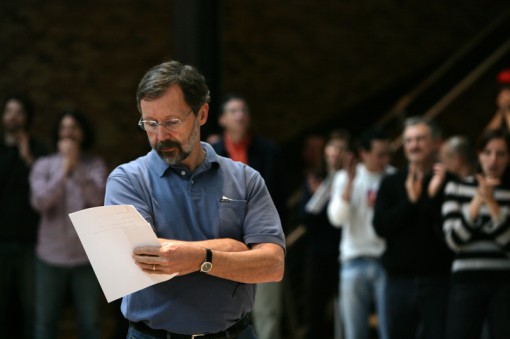
Animag: Can you talk a little bit about the art of bringing artistic and technical people together to make the most of their talents?
Catmull: At a cultural level, they each have to believe that the other is the best in the world. We use the films themselves as our underlying principle: It’s not whether the technology or the art needs to be good, but the movie needs to be good. Everything else is secondary to that. That is the shared value that everyone has, and as long as everybody has the same shared value, and they just look at the fact that they are contributing to make it happen, from that you get a situation that they get together to solve a problem. It’s not a point of conflict when it’s about working with each other and helping each other. You simply just make sure you have your values correct, which is a very clear notion about making honest films with integrity and emotion.
Animag: What is your take on the overall state of animation around the world?
Catmull: There are two or three things that are happening simultaneously—part of it is because of the Disney renaissance of the early 1990s. More schools began to train people. We have a higher number of places where students can get high-quality training worldwide. So the base of artists is getting larger. Along with that, the technical tools are getting better and cheaper. Schools are able to put together shorts and new works coming out of research departments. More studios are jumping into the field because they can afford the tools and more people are trained, so the result is this golden age where there’s a lot of material. Some are just jumping in just because they think it’s the thing to do. Sure, there’s some poor animation, but there is also a lot of good stuff here. And they represent differences in viewpoints which is healthy for the industry and we all want a healthy film industry. For us to produce successful, healthy films is good for everybody.
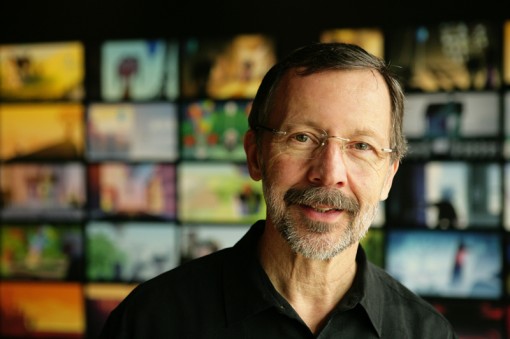
Animag: Does the fact that Pixar has had 12 hits in a row create some angst and pressure as well, to maintain that pristine record?
Catmull: We try to be careful with the directors and not put too much pressure on them. But regardless of what we tell them, they don’t want to be the one to lose that record themselves. There’s a lot of self-imposed pressure, but that’s why you need to have everyone helping each other out. If things don’t work out, we do things internally. But while people may think this is a smooth-running machine, it’s not. It’s just as hard as anywhere else. The only difference is that if we don’t like it, we don’t release it!
Animag: What would you say is the toughest part of your job?
Catmull: It’s kind of hard to answer, because of the morale at Disney after Tangled was a big success, Wreck-it-Ralph is going to be great. The DisneyToon Studios’ Fairies series is also doing very well, so the morale is great, they have a new building in Glendale which is really nice. And we have some really cool projects coming up at Pixar. I am actually feeling very happy, and the general managers at each of the studios are pretty good, and they all get along very well with each other. All this attention to culture and how people work with each other pays off! So it makes it all a labor of love.

Animag: What do you love best about your job?
Catmull: This is ironic, not people may expect this. But when we have problems, which we always do, it’s great when people feel like they own the problem. They don’t say to the managers, “Oh what are you gonna do to fix the problem?” What they’re saying is: “We’ve got a problem, what can we do?” That makes me feel better than anything else. That’s real ownership. Everyone wants to own a success—but when they feel like they own the problems, that’s when you really own a studio!
Animag: What kind of advice do you give people who want to get ahead in this field?
Catmull: I am going to give an answer that might seem contradictory. One is that I believe that people should have breadth…that’s what I like about general education, history, economics, thought, etc. The second thing is I believe that each person, when they go to college, they should pick one area that they’ll get into very deep. To experience a deep understanding of one thing…to master something helps you get the confidence to master something else. One level is a horizontal one and the other is vertical, very deep.
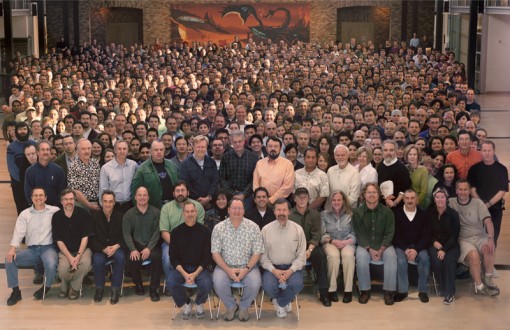
Animag: What were some of the movies/TV shows that made a big impact on you when you were growing up?
Catmull: From the animation world, there were two films that really grabbed me as a child. One was Pinocchio and the other was Peter Pan. The interesting thing was that I was heavily influenced by those two films when I was a young boy. But it was years later when I saw them again as an adult, that I realized that I had remembered things in the movies that in fact were never in them. The movies were so evocative to me as a child that I had filled in that world. That’s what children do, they fill in the gaps with their imagination. Of course, seeing Walt Disney on TV was a huge inspiration. As I got older, my favorite live-action movies were more dramatic, films like Who’s Afraid of Virginia Woolf?, Patton, Amadeus and Sleuth.
Animag: Do you watch anything on TV regularly these days?
Catmull: Given my schedule, the only thing that I watch on a regular basis is American Idol. It’s kind of funny… There are things I love about it. It goes through three different stages, where you actually see young people change as they go through the changes.
I know it’s changed because it’s no longer Paula and Simon, but it was this great metaphor with the judges: one of them represented your mother and the other was cold, hard reality. The fact is that there are times when we want our mother and there are times when we have to face cold, hard reality. There’s something I’ve always loved about that metaphor.
Disney/Pixar’s next big release is Brave, directed by Mark Andrews and Brenda Chapman, which opens in U.S. theaters on June 22 and continues its global rollout through August.

A Conversation with Bill Damaschke, CCO of DreamWorks
Bill Damaschke first joined DreamWorks in 1995 as production coordinator on Prince of Egypt. He quickly rose through the ranks and became head of production and development in 2005 and co-president of production for feature animation soon after. In early 2011, he became the division’s chief creative officer, overlooking all of the studio’s recent box office successes and Oscar-nominated projects such as How to Train Your Dragon, Kung Fu Panda 2 and Puss In Boots. We had the chance to catch up with the talented and extremely busy industry heavyweight during a Los Angeles presentation of the studio’s upcoming releases, Madagascar 3: Europe’s Most Wanted and Rise of the Guardians.
Animag: Last year was a terrific time for DreamWorks. Both Kung Fu Panda 2 and Puss In Boots received Oscar nominations and made the Top 10 global box office of 2012. How would you define your studio’s brand today?
Bill Damaschke: It’s funny, because my mother told me that 100 percent of the movies that we made last year were Oscar nominated! Seriously though, the movies we have coming up this year really deliver the full meaning of what a DreamWorks movie is—which is innovative, great storytelling, great characters, big-hearted movies, big adventures and worlds that we’ve never seen before in the way our movies are showing them. I’m very excited about Madagascar 3 and Rise of the Guardians. If you put them next to each other, you can see the stark contrast and it demonstrates that our studio doesn’t have one house style and isn’t about one tone of film. It’s about really leaning into the sensibilities of the filmmakers that come to work on our moves. Our brand will continue to be defined by innovation and entertainment as it always has before.
Animag: What is your personal take on the future of the art form and our industry?
Damaschke: On one hand, it feels like we’ve been doing this forever, but it also seems like it’s the beginning of it all in many ways. CG animation is a 15-year-old industry, and what we’re seeing are more and more live-action filmmakers choosing to tell their stories in animation. It’s clearly interesting to have this blend of live-action and animation filmmakers working together, and it will continue to push storytelling and technology. I think the look of animated movies will also evolve and change because of the new developments in technology. Rise of the Guardians is a perfect example of a movie that looks very different from anything before it. That’s partly because of the technology. In the early days, we had movies about toys and bugs and animals, because they were much easier to depict in CG animation, but now you can tell a great story with human and humanesque characters.
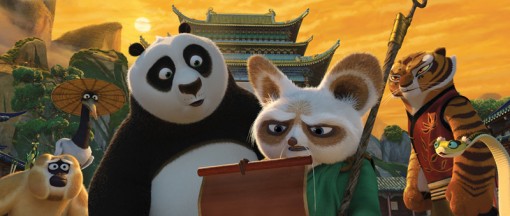
Animag: You started your DreamWorks career with the 2D animated Prince of Egypt; are we ever going to see your studio produce another traditionally animated movie?
Damaschke: We always say that we use the right style and technology that suits the story best. The good news is that right now we are working on a movie called Me and My Shadow for 2013. It’s about a shadow that longs for a more exciting life and eventually moves into the real world. The shadow part of the movie is done in hand-drawn 2D, while the human world will be in CG.
Animag: What do you find to be the most challenging part of your job, and what do you really love about being the CCO of DreamWorks Animation?
Damaschke: Interestingly enough the answer to both questions is the same. The biggest challenge and what I love most is that I get to work on many, many projects and with many, many people. Right now, we have nine movies in production and much more in development and many more planned for way, way in the future. In a way, I get to work with and be part of the team in all of those movies, so I am able to switch gears between films and see different things going on and be inspired and invigorated by all the great work happening at the studio. I am from a big family, the oldest of seven kids, so sometimes it feels the same. It’s hard to feel like you’re doing a good job on any of them! So, to me, it’s always a big opportunity and the hardest part of it that I get to manage all of these movies.

Animag: What were some of the movies that inspired you to get into this business?
Damaschke: There are two … I love, love, Pinocchio. I remember seeing it and I remember learning about how the film was made and learning about the multiplane camera. I recall even as a very young kid being fascinated by the way the film was made. I didn’t go to work in animation until much later. I started out my career as an actor and I remember being in New York and seeing The Little Mermaid in the city, and I thought, wow, animation—what it used to be—is back. Then when I came to L.A. and got a job at Disney initially, all my friends told me this makes so much sense for you, because you’ve always loved animation. So I would say Pinocchio was the first flash point, and then The Little Mermaid. After DreamWorks opened, I was so excited to be part of the studio’s first feature The Prince of Egypt. Besides animation, I also remember being very inspired by the classic Fred Astaire/Ginger Rogers musicals. WGN TV station in Chicago used to air five of them back to back on New Year’s Eve, and I’ve seen all of them about 100 times now!
Animag: What do you watch regularly on TV these days?
Damaschke: I’m a huge Downton Abbey fan. I also never miss The Walking Dead, although I was traveling last week and haven’t watched the most recent episode yet. But I hear something big happened, so please don’t tell me anything about it!
DreamWorks Animation’s Madagascar 3: Europe’s Most Wanted will open in theaters on June 8 and The Rise of the Guardians on Nov. 21.
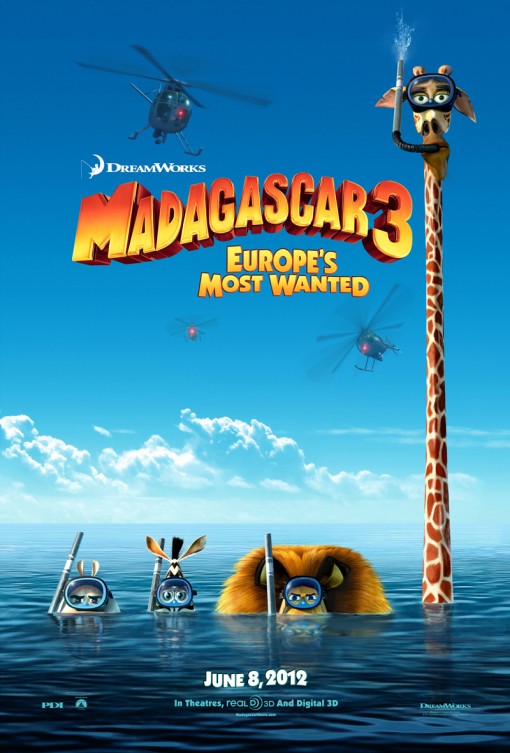
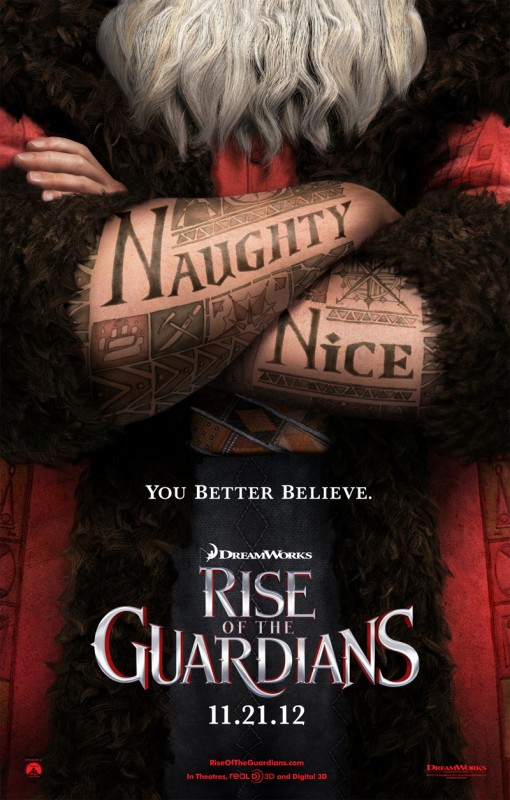
Beyond Talking Pigs and Singing Chipmunks
VFX powerhouse Rhythm & Hues celebrates 25 colorful years, embarks on more ambitious projects and plans bigger expansion overseas.
Although average moviegoers may not be able to identify the work of Rhythm & Hues, they’ve been enjoying the impressive handiwork of the studio’s artists for 25 years now. Whether it’s the two Babe movies or live-action adaptations of toons such as Alvin & the Chipmunks, Garfield, Yogi Bear and Scooby-Doo or more sophisticated outings such as The Golden Compass, X-Men: First Class and Percy Jackson & the Olympians, the smooth CG work of R&H has left a big impression on our pop culture landscape.
Founded in 1987 by John Hughes, Keith Goldfarb, Pauline Ts’o, Frank Wuts, Charles Gibson and Cliff Boule (former employees of Robert Abel and Assoc., which specialized in TV commercials with computer graphics), R&H evolved as a leading producer of vfx and character animation. After acquiring VIFX from 20th Century Fox in 1999, the shop continued to expand its reach overseas. R&H has also opened two additional production facilities in India (in Malad and Hyderabad), another one in Kuala Lumpur, Malaysia and one in Vancouver, Canada. The studio will continue its international growth with plans to open a third studio in India, and two in Taipei and Kaohsiung, Taiwan this year.
“What made us famous in the feature world was the happenstance of developing technology that was used in the original Babe in 1995,” says Lee Berger, president of the studio’s feature film division. “We developed a method to make animals talk that no one had done before, lighting the interior of mouth, changing the expression of the face and, overall, using a more realistic approach. People in the industry came to think of us as the studio that could do photo-real animals, before the technology was there to do full-body animation.”
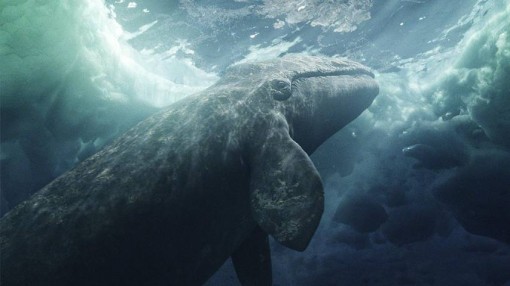
As more family movies began to spotlight talking animals, like Cats & Dogs and Scooby-Doo, photo-real animals began to supplement animatronics.
“Hollywood was able to mine a lot of these cartoon characters using this technology that we were known for,” adds Berger. “It was a combination of the technology, timing and luck, as is everything!”
Berger also brings up the point that Rhythm & Hues offers artists a great work environment.
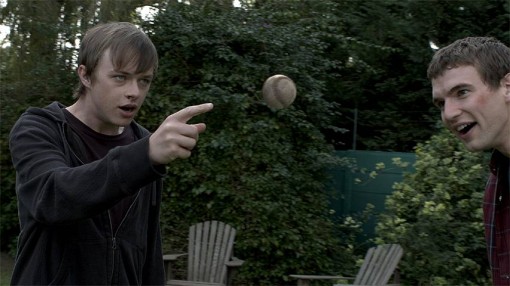
“We’re privately owned and not a big corporation,” he notes. “John Hughes, Pauline Ts’o and Keith Goldfarb have fostered an environment that’s about the employee. We still have a mom-and-pop atmosphere; People like to work here. We’re vendor-oriented and try to accommodate the client and do good work. I think all those factors work in our favor.”
The film division’s topper says he’s been very impressed with the recent work the shop has delivered for movies as wide-ranging as Chronicle, Big Miracle, The Hunger Games and Life of Pi. But he is also quite clear about the economics of the industry today.
“It’s no surprise to anybody that animation and visual effects are played on a worldwide stage,” Berger points out. “It used to be all L.A.-centric back then, but we had executives here with more foresight and that’s why we opened up our international facilities to make use of the economic incentives and mine the artistic resources of other countries. We went to India in 2001 and started our company so that we could teach Indian professionals about our software. We wanted to make them part of our culture. We follow the same philosophy in our other studios. The L.A. studio [which is based in El Segundo] has about 750 employees; overall our numbers are about 1,300. Since we started our offices overseas, we have doubled in size.”
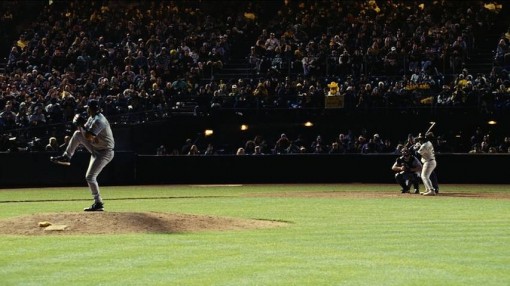
Evolving from Flying Logos
Clark Anderson, director of the shop’s commercial division, who has been with the company since the beginning, remembers working on computer-generated flying logos with John Hughes back when they were both at Abels. He also believes that R&H makes a special effort to take good care of its artists.
“You got to do good work and you got to keep the talent happy and that’s one thing that R&H does better than anyone else,” says the industry veteran. “We’ve had lots of ups and downs through the years, and John had many opportunities to let a bigger studio like Fox buy us, but he never wanted to do that. It was very important for him to keep the unconventional rules and quality of life around here. He is a businessman, but he also wants to keep the artists happy to do what they do.”
The commercial division of R&H employs six or seven live-action directors and a core of about a dozen artists. Anderson says when the division is busy, they can draw from the resources of the studio. If you’ve seen a photo-realistic animal in a clever commercial on TV recently, chances are Anderson and exec producer Paul Babb were behind the seamless effects.
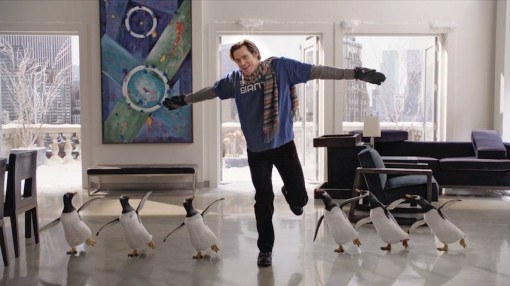
“We have a nice mix of cute characters, creatures, race cars,” he says. “I’ve never grown tired of the fact that I get to get up every day, work with some very smart, creative, hardworking people, and we get to create something together.”
All the World’s a Stage
Prashant Buyyala, the managing director of R&H’s international facilities, first joined the company as a summer intern who worked as a field camera operator.
“I was completely drawn to the studio because of its culture, the people and its unique values,” says Buyyala, who spends a lot of his time traveling to the studio’s new facilities in Taiwan. “The kind of freedom employees have here, the access they have to John Hughes and the rest of the top directors is pretty amazing.”
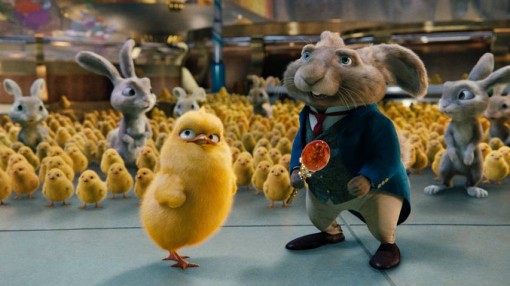
Looking back, Buyyala remembers a time when the senior management had to come to terms that R&H had to take action to be a player on a global level.
“We realized that the visual effects and animation business was becoming a more international playing field; our own employees were 50 percent from all over the world. We were getting competition from the U.K., Australia and Canada and other regions that offered tax breaks and government incentives. India and China are going to be huge economic markets. So we had to start adapting to the new climate.”
Buyyala also brings up a certain paradox—that many felt that by growing the studio overseas, a lot of jobs were going to be taken away from Hollywood. But he insists that because the company has been able to keep its doors open and offer competitive prices to the global market, more jobs have been added at the L.A. studio. “Embracing globalization has allowed us to tackle more work and compete against some of those tax incentives,” he says.
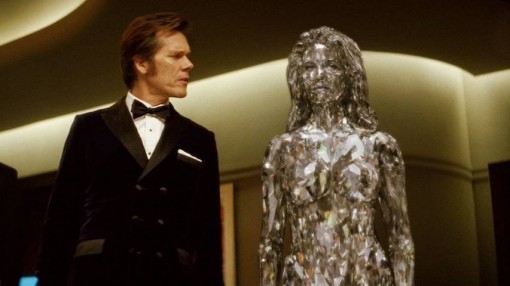
The next goal for R&H is to leverage its strength to co-produce its own content, which is something Lee Berger and his team are focusing on. The studio was a co-producer on Warner Bros.’ 2010 feature Yogi Bear, which made over $201.5 million worldwide.
“One of our biggest challenges continues to be acquiring vendor work from the studios,” says Berger. “We need to keep our employees busy while giving the studios quality that fits their budgets. Although Hollywood studios have a lot of visual effects work, money is tight. We’re always trying find ways to produce that product for the right price.”
But no matter how much effort it takes to keep the clients happy, Berger says it’s all worth it when he and his team are able to see the final fruits of their labor.

“You see the final film or ad, and realize the skill level and artistic achievements of the people you work with…and that’s one of the great rewards, regardless of the long process. You look at the movie and say, ‘Wow, we did this!’
For more info about the studio, visit www.rhythm.com.
Teen Spidey Reports for Duty
Ultimate Spider-Man begins to spin its colorful web on Disney XD’s new Marvel block.
There must be something so primal about the Spider-Man legend that each generation seems to demand its own version of the mythic Marvel superhero. Since movie audiences are treated to a new reboot of the agile crime-fighter this summer, it made total sense for the team at Marvel to synchronize an updated animated TV series featuring the web-slinger.
The fact that the new Ultimate Spider-Man show is co-exec produced by original creator Stan Lee and Eric Radomski (Batman: The Animated Series, Spawn) and produced by Man of Action Studios’ Joe Casey, Joe Kelly, Duncan Rouleau and Steven Seagle makes the arachnid offering even more enticing. And let’s not forget that toon master Paul Dini (Batman: The Animated Series) wrote the pilot and is credited as creative consultant for the show.
“We really wanted the show to feel like Marvel, just like the live-action movies and the comic books do,” says Jeph Loeb, Marvel’s head of TV, who exec produces the series with Alan Fine and Joe Quesada. “If you were to spread out a bunch of comic books from different companies on a table, you could easily point to the ones that were from Marvel. The adventure is bigger than the page: The characters bring you in emotionally, but the action and adventure jump off the page and knock you out of your house! It’s in the Marvel DNA!”
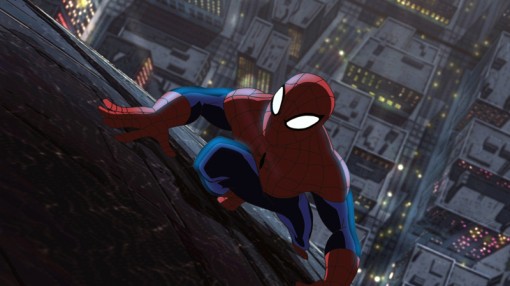
It seems that most of the creators and artists who are working on the new show have a special fondness for Spidey.
“Spider-Man has been a personal favorite of mine since I was a boy,” says Man of Action’s Joe Kelly. “He is this normal kid who has these amazing powers, and to paraphrase the famous quote, working on the show came with a huge level of responsibility, because it’s such an iconic character.”
Kelly fondly remembers getting his first Spider-Man comic books from his uncle back when he was seven years old.

“I loved the way he cracked jokes, and as a kid, I found him so appealing. I also remember seeing him for the first time on TV on The Electric Company.”
He also points out that one of the greatest things about Spider-Man is his ability to deal with the blows of life in a positive way.
“No matter how bad things get, he manages to come up with a way to improve the situation, to make lemonade out of life’s lemons,” say Kelly, whose many animated credits include Ben 10, Generator Rex and the upcoming feature Superman Versus The Elite.

Of course, there’s that famous Spidey sense of humor.
“What’s unique about Spidey is that he has a remarkable sense of humor—even more so than any other Marvel character,” adds Loeb. “Peter is constantly bringing the viewer into his world. He might stop, turn around and look at the viewer and talk to you. In a way, he’s inviting us to take part in all the drama, comedy and adventure.”
Kelly also brings up the point that this particular incarnation of Spidey offers a special approach to storytelling.
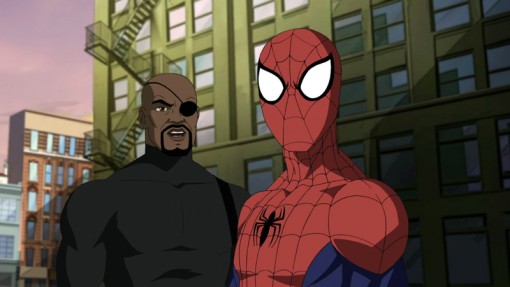
“We looked at the lot of the previous Spidey shows, and there was a lot to like about each one of them. One thing that was important for all of us was the storytelling itself. In the comic books, Peter has this internal monologue and talks to himself. We wanted the same direct connection with the audience, so that he can break the fourth wall. We wanted the show to be a real Marvel comic come to life, with the same kind of humor. So we explore the humor the way only animation can do. This is not about just having one-liners from a guy with no mouth—but it’s about really exploring the medium with visual gags, cut-aways, etc., and really having fun with the situations.”
In the new show, viewers get to meet a teenage Peter Parker (voiced by Drake Bell) who is juggling the daily challenge of high school life with the not-so-ordinary demands of being a superhero. Parker is also invited to join the S.H.I.E.L.D. organization by Nick Fury (voice of Chi McBride) where he meets four other young superheroes in training—Nova, White Tiger, Power Man and Iron Fist.
“I think another fun aspect of the show is that you can recognize some of the other characters from the other series or movies,” adds Kelly. “Harry and Mary-Jane are there, and Flash makes his presence known. You can open the door to the other characters in the Marvel Universe. There are definitely a lot of surprises in store for the die-hard fans.”
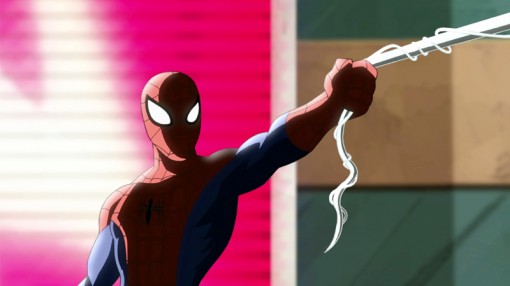
Given the top-notch studios involved (like Korea’s Dong Woo, EMation and Moi), you know that the animation is also going to be high-end and stylish.
“The animation team has done an incredible job of translating the Marvel style for a modern audience,” says Kelly. “It feels like Marvel, but it’s not the Golden or Silver age of the comic book, it has a more realistic feel to it—a real gravity. You can build the city in 3D or give an episode a hand-held camera quality. We have sets that are flawlessly integrated with the lead characters. When you have Spidey talking to the camera and you see things through his perspective, the animation style is really trippy. It keeps the action bouncy and fun.”
According to Loeb, Paul Dini has also been a big lifelong fan of the character.

“Paul Dini, whom we all love and know from his animated Batman series, is the biggest Marvel geek in the world,” says Loeb. “He has worked across the street (at Warner Bros. Animation) for so long, I can’t believe nobody had asked him to play with us. So we were very pleased to have him, as well as the Man of Action guys, Brian Michael Bendis—who has worked on so many Marvel comics—and Eric Radomski, who had this great vision for what the show was going to look like. On top of that, it moves like a freight train. You feel like you’ve had a great meal after you watch an episode, and you want to see more.”
Kelly agrees.
“I think the series has been successful in recreating the experience I had when I was reading the comics as a kid,” he says. “We’ve struck that fine line between being action-packed and funny. And it also has a heart. This is the kind of show I look forward to sharing with my own son.”
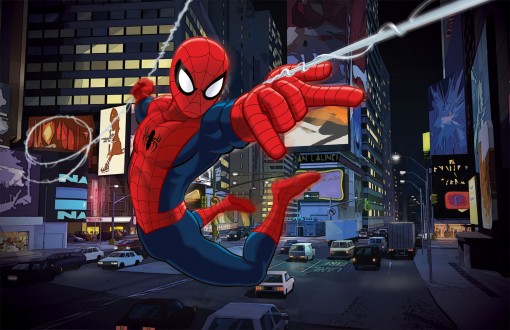
Ultimate Spider-Man premieres on Sunday, April 1 at 11 a.m. on Disney XD as part of the new Marvel Universe block, which also features the second season of The Avengers: Earth’s Mightiest Heroes as well as short-form animated series and live-action interstitials, hosted by Morgan Tompkins.
What Animation Means to Me…
On the occasion of our 25th anniversary, we asked our readers and the top movers and shakers in the industry to tell us what animation has meant to them and how it has changed their lives. Here is just a sampler of the many wonderful and touching responses we received.
“I was 14 when The Simpsons premiered and it blew my mind! I became obsessed with the show and drawing Bart became my identity. I was 19 when I got hired on The Simpsons and, after 16 years, I still can’t believe they’re paying me! (But don’t tell my boss I said that!)”
— Brad Ableson, Storyboard Artist, The Simpsons [Fox]
“Animation means so much to me—as nothing brings a young imagination to life like it. The ability to create worlds, visit amazing characters and literally go anywhere will never date and I will always love it. The longevity of shows like Scooby-Doo, which I watched as a child and then again with my own children and, I suspect, my future grandchildren is a testament to how animated content will always resonate with the audience. Happy 25th birthday, Animation Magazine.”
— Sarah Muller, Head of CBBC Acquisitions and Drama Development
“I get to hang out with my friends every day and try to make each other laugh by drawing silly pictures, telling silly stories, writing silly songs and doing silly voices… and they actually pay me! How cool is that?”
— Dan Povenmire, Creator & Executive Producer, Phineas and Ferb [Disney Channel]
“To me, animation is happiness. Until the age of 28, I had tried every different job I could find, from digging ditches, aerospace engineering, waterbed installation and even computer industry executive (the full list is almost comical in the quantity and variety of occupations). Most of them made me miserable at worst and ambivalent at best. Getting my first job in animation completely changed my life and even though I took a pay cut in the beginning, I had never been happier. That was back in ’88 and still today I feel like I am one of the happiest, most fulfilled and truly enthusiastic people I know about my chosen profession.”
— Swampy Marsh, Creator & Executive Producer, Phineas and Ferb [Disney Channel]
“Animation has always had a strong influence on me. At 12 I began making movies. I tried animation and really loved it. I studied animation in school. Today, I continue to practice my craft. Recently, I completed a claymation short, Adventure Dog. (This is available on Youtube.)”
— Robert Schevitz, Founder, 4|Reel Productions
“Animation for me represents the perfect medium to tell the most imaginative stories that come to my mind, a chance to collaborate with wonderful people around the world and to work doing what I’ve loved ever since I was a kid. It doesn’t get better than that!”
— Mauricio De la Orta, Director, The Adventures of Manu [Avikoo Studios]
“As an animation globetrotter, I have been reading Animation Magazine throughout my years in this business, from Canada to China, learning from the veterans and visionaries of the trade. You make me dream and work. Thanks!”
— Sean Chu, VP, Kids, Ciwen Media Group
“Working within animation we live in the zone of imagining—the freedom of imagination we felt as kids is brought to life in the creation of animation.”
— Jennifer Emin & Jez Nicholls, Founders, Itchy Feet Animations
“Animation is believing that an imaginary character’s life extends beyond the constraints of the frame. It means that their struggle is real to you, and you are moved by their decisions.”
— Matthew Sullivan, Computer Animation Student, Ringling College of Art and Design
“Animation is an addiction. It is meant to be a glue for folks who watch it and fall in love with the characters and worlds. However, this syndrome afflicts the equally large number of artists and technicians involved in creation and production—who live eternally smitten by the ‘animation bug!’ Coming to this industry after two decades of working in marketing and strategy, everything has changed. My wardrobe, style of communication, use of both sides of the brain and my belief in and dependence on divine powers! It’s the people in animation that makes it such a compelling industry! Besides having a heightened visual ability, the medium needs patience, many alliances, motivation, persistence, constant reinvention of oneself and the craft and, of course, dollops of luck! Animation is my life and will remain so long after it is my livelihood!”
— Biren Ghose, Country Head, Technicolor India & President, ABAI
“The world of animation is its own galaxy of entertaining elements which have to be combined as creatively as possible. Nearly everything is ‘animatable’ if it has a good plot—and if it reaches the heart and soul of the audience. Congratulations on your unique performance over the last 25 years—Animation Magazine is the only one in this business that informs steadily what’s current and the state of the art.
— Winfried Debertin [Director] & Christoph Busse [CEO/President], MPP Agency for Animationmedia mbH
“Animation brings together art, stories, characters, music and performance in a totally unique way that no other film making process can. Done well, it’s wholly satisfying to the senses and allows the imagination to soar and the emotions to be set free.”
— Heather Wright, Executive Producer & Head of Commercials and Branded Content, Aardman Animations
“At the outset, I thought that animation was just another field of the TV industry. But I soon found out that it was much more: We are a big, fun, dysfunctional family that goes across borders and cultures, with a unique mix of talent, money people, writers, producers, designers…This family culture is, I think, truly unique to our craft, and this is why I won’t ever be leaving it.”
— David Michel, General Manager, Marathon Media & SVP – Marketing, Zodiak Media
“Animation is an art form that can enrich the world through its magic craftsmanship, heartfelt stories, and be a true gift to the world.”
— Gabe Swarr, Supervising Producer, Kung Fu Panda: Legends of Awesomeness [Nickelodeon]
“We truly value and appreciate our partnership with Animation Magazine, which plays such a critical role in writing about all the movers and shakers of the animation industry. At Toon Boom, we share the same passion for animation and look forward to many more years of collaboration! Happy 25th Anniversary!”
— Joan Vogelesang, President & CEO, Toon Boom Animation Inc.
“Animation has introduced me to a world of creative, smart and wonderful people whose children’s shows are often more insightful than those written for primetime. I adore the international animation business and all the friends I’ve made over the years.”
— Annette van Duren, Annette van Duren Agency
“25 years is exactly the time I’ve been pioneering the CGI industry! From producing 10 frames per day to half-hours per week, what a creative revolution! But, as surprising as it may sound, the biggest thrill is still ahead of us: new formats, new screens and potentially infinite interactive spin-offs…”
— Guillaume Hellouin, President & CEO, TeamTO
“Animation will always be evolving and adapting as long as there are creative people who have the love that fuels their hearts for the art and the imagination that keeps the creative gears in their heads turning to bring great cartoons and movies to the masses.”
— Gary Bryant, Student, Full Sail University Online
“1987 marked the year I got involved with animation, so I celebrate my 25th anniversary along with Animation Magazine. Thank goodness for your magazine. It’s been an enduring chronicle of our industry. There’s been a ‘Thoren’ at my side ever since and I hope we’re both around to celebrate another 25 years.”
— William “Bill” Dennis, Partner, International Animation Consulting Group & Founder/Principle, Zanymation International
“Animation Magazine 25? You don’t look —or behave—a day older than five!
25 years ago I was half the age I am now and had twice as much hair (or at least it grew in more conventional places). I was working with a little known animator called Don Bluth trying to ensure that we didn’t run out of money while bringing films like An American Tail and The Land Before Time to the world. Little did we imagine that this would result in such a huge re-awakening of interest in animation, paving the way for companies such as Pixar and the healthy state of the industry we see to-day. Animation Magazine has been the source of industry news in this time, a constant in a changing industry.”
— Andrew Fitzpatrick, Founder & Chairman, Monster Distributes Ltd.
“Animation to me is a release of my mind onto the world. It’s a way for me to express myself through visual means, filling people with joy or sadness, as I make my characters react to situations made from my imagination and personal experiences.”
— John Governanti, Computer Animation Freshman, Ringling College of Art and Design
“The first thing is very simple: Love what you love. Don’t give up that love.
Creatively, do things you want to do. If you are the creators, you’re the ones who set everything up. Cooperate amongst yourselves…Share what you have amongst yourselves. Don’t be like the old generation. Where I come from it was: Mine! My Precious! It’s not. Everything is there for us to use and create. You must forget the past, as far as its negatives are concerned. We must know history. We must know where we come from, but… Go, have fun. And be who you are. Love what you do. Love it. And you will be successful.”
— Phil Mendez, Illustrator, Animation Designer & Director
“I love drawing and art. And I love storytelling, TV and movies. It’s really a perfect combination of the things I dig. I don’t have many hobbies. Some people have a job and a separate hobby. This is pretty much all I do, and I still love it.”
— Chris Prynoski, Creator, Executive Producer & Director, Motorcity [Disney XD]
“Animation changes my life every day because I work with talented and creative students. At the Irish School of Animation we are educating the animators of the future and hopefully some of them will grace the pages of Animation Magazine over the next 25 years.”
— Gareth Lee, Program Leader BA (Hons) Animation / Program Director ISA CON, Irish School of Animation at Ballyfermot College of Further Education
“Life is like an animated movie—the impossible is possible, there’s nothing that can’t be solved by an anvil on the head, and absolutely anything can happen, so just hang on and enjoy the ride! Thanks to Animation Magazine for a great 25-year ride!”
— Mark Byers, Executive Producer, DeZerlin Media (Qingdao, China)
“Animation has given me the gift of being a kid again, where laughter and imagination are as essential as breakfast every day…Seeing life through a set of cartoon glasses is such a colorful, uplifting way to experience the world. And if something doesn’t work, you get to hit delete and try it again! Awesome. The perfect antidote for depression and old age!”
— Julie Stall, Vice president of Production, Portfolio Entertainment
“As a boy, I loved animation and designing characters. My life changed in 1999 when my first creation, Bob the Builder, appeared on the BBC and my hobby became a career. Now I create characters and animated shows for a living. It’s the best job in the world.”
— Keith Chapman, Founder & Creative Director, Chapman Entertainment
“Through animation I’ve gained a new-found appreciation of story. Animation allows pictures to tell stories that other mediums can’t.”
— Scott Bogoniewski, Chair of Entertainment Arts, College for Creative Studies
“Animation found me as a fan in ’75, followed me as a student in ’86, made me proud as a professional in ’89, fired me up as an instructor in ’04 and in 2012 animation still has me inspired. I’ve enjoyed a complete relationship with this industry and I have no plans to stop now. I wouldn’t be who I am without it … but don’t tell my therapist.”
— Tammy Zeitler, Animator & Instructor – Computer Animation Dept., Ringling College of Art and Design
“When I graduated from high school the options weren’t great: Join the military and go to Vietnam, get married and immediately have kids, or go to college. Choosing the latter, I wanted to work on animated features, and for nearly three decades that’s what I did. Now I help animation students reach their goals.”
— Dan Hansen, Director – Character Animation Program, California Institute of the Arts School of Film and Video
“Without animation, I would have become an embittered, wanna-be comedian with a failed sitcom tragically titled Butch under my belt.”
— Butch Hartman, Creator & Executive Producer, T.U.F.F. Puppy and The Fairly OddParents [Nickelodeon]
“I was only 19 when I started my career, after stopping into the MPSC Union 839 where I got a list of the studios in 1971. I had grown up watching Felix the Cat, Popeye, and the Flintstones along with Rice Crispy and Charlie Tuna commercials and loved the thought of working with cartoons. My first job was with a small studio named C&D, owned by Bill Hanna’s sister. We specialized in ink & paint, and I learned to flow the paint between the lines of the hand-drawn characters. These were the days when jobs were plentiful in the U.S. and studios would ‘teach people’ if they had a promise of talent. I was lucky to be taught and later learned Color Key. I went on to enjoy 30 years in the industry in commercial houses, TV and motion picture studios including DePatie-Freleng, Marvel and Disney. I met many well-known and talented people such as Fritz Freleng, Stan Lee and Bill Hanna along with too many creative artists to mention. I would never have had as much fun nor such an exciting career if I had not stepped through the doors of Animation.”
— Robin Koblin [Draper], Artist & Animator
“Originally, I was a live-action writer and producer in Northern Europe. My films were made for national markets. Sixteen years ago my animated show Loggerheads changed the view; every series or movie I produce now is made for global exploitation. In animation and live action.”
— Ralph Christians, Executive Producer, Magma Productions
“From an early age, animation was a source of entertainment, education and inspiration. Tom and Jerry not only taught me how to make a parachute, they also inspired me to believe that I might actually be able to jump off of the family garage with it. Animation taught me to dream!”
— Randy Dormans, Supervising Producer, Kung Fu Panda: Legends of Awesomeness [Nickelodeon]
“Hmm…How animation has changed my life? I suppose, when I think about it, animation has given me the opportunity to do things I might never have experienced and visit places I might never have seen. It has certainly allowed me to meet maybe thousands of people I would have never met otherwise. Changed my life? Sure. It has made mine a deeply interesting and movable feast!”
— Frank Gladstone, President, ASIFA-Hollywood
“The number of passionate and talented people I have had the good fortune of becoming friends with during my time in animation has been just fantastic—from artists to businessmen, from writers to engineers, from actors to journalists… And each year I keep meeting more. How great is that? To paraphrase the legendary Chico Escuala, ‘Animation has been berry, berry good to me!’”
— Michael Mennies, Director of International Development & Production, Riki Group
“My father Claudio was not very happy with his marriage with my mom Maria Jose. Claudio thought animation was the perfect way to build up dreams outside of his average routine and created an animation studio as a way to enjoy work and try to achieve success. Right after creating BRB, Claudio had his third baby son… named Carlos. The studio turns 40 years old in 2012… and so do I! So, animation—aside of being my everyday joy—is basically the reason why I was born. It is my life!”
— Carlos Biern, Executive Producer, BRB Internacional
“I have worked with koala bears, robots, chipmunks, aliens, monsters, mutants, super heroes, ghosts, dragons, talking sponges, vampires, princesses, turtles and more…not many people can say that…and of course, wonderful ‘human’ peers from every continent of our planet! But my favorite and most humbling moment was when a new show I was working on came on Cartoon Network: My three-year-old daughter recognized it, saying, ‘Daddy …isn’t that the show you made?!’ I said, ‘Yes!’ (beaming with pride)… to which she responded, ‘…Can you change the channel to Dora?!’ Oy vey…now that’s entertainment!”
— Eric S. Rollman, President & CEO, Rollman Entertainment, Inc.
“Through the art of animation I have truly been blessed to use my passion for drawing to entertain others. Animation has opened countless doors that I never would have experienced otherwise. Now I am able to pass this knowledge that enriched my life to my students at Full Sail University.”
— Anthony Michaels, Animation Department Chair, Full Sail University
“When I was nine years old, while watching Looney Tunes, I noticed the Sound. Then I thought, ‘You know what, God, I want to be a soundman… And meet Bugs Bunny!’
Years later, while working with Mel Blanc, I realized…I had forgotten my prayer, but God didn’t.”
— Andy Morris, President, Buzzy’s Recording
“Animation changed my life like it did to Eddie Valiant. I learned that cartoons are people, too, and should be taken seriously—but only when they’re funny.”
— Thom Chapman, Vice President, ToonBox Entertainment
“So, once upon a time (33 years ago), I went to collect my son from kindergarten and the teacher said, ‘We love those SuperTed stories,’ and that changed my life. SuperTed became books, animation, moved to the U.S., started a studio and the rest is not quiet yet history!”
— Mike Young, Co-CEO, MoonScoop
“Since my 14th year, animation has always been first priority. All other events, including personal, have evolved from my first interest, and I have never regretted it. I have had the good fortune to have my work be my hobby and to befriend my heroes. Who could ask for more?”
— Hans Perk, President & CEO, A. Film L.A., Inc. & Director, Miffy the Movie (2013)
“Animation allowed me to practice my art form and make a living at the same time that allowed me to be close to my family. Animation allows me to share my dreams.”
— Marc Dole, CEO & Executive Producer, Hatchling Studio
“Nothing is as much fun to me as making great animation. As a kid, I was up at 6:45 every Saturday, eager for my cartoons to begin. Then through life’s twists and turns, I wound up at Nelvana on a month’s contract where my eyes were opened to this wonderful industry, and I’ve never looked back.”
— Vince Commisso, Co-Founder, President & CEO, 9 Story Entertainment
“In 1987, having enjoyed 21 years of being a producer of music, television and commercials, I started producing my first animation series. I join whole heartedly with Animation Magazine in celebrating 25 years in this extraordinary and inspirational industry.”
— Jonathan Peel, Chairman, Millimages
“In 1978, I began at Hanna Barbera as a worker in the warehouse. Though my aspiration was to be a writer, I was happy to have a regular job with a weekly paycheck. For two years, I pitched script ideas to Mr. Barbera’s secretary to give to him, though I don’t know for sure if any were ever passed along. One day Mr. Barbera came to the warehouse and said, ‘Kid, you’re up.’ As it turned out, he had sold the entire Saturday morning schedules that season to ABC, NBC and most of CBS, promising each network he would oversee their shows exclusively. This led to my opportunity to work at the foot of the master learning story, voice work, direction, gags, and most of all, sales. ‘Kid, this is how we milk a gag.”Kid, this is how you get the best line reading.’ Kid this, Kid that. The show I worked on that season was Yogi’s All Star Laff-A-Lympics … and my tiny role sweeping behind Mr. Barbera got my career rolling. Eventually I had an opportunity to leave and start my own animation company, DIC, beginning with Inspector Gadget. I always stayed close with Mr. Barbera, and he always called me, ‘Kid.’ Several years later, DIC had many shows in production and was really flourishing. One day, Mr. Barbera called me up, and said, ‘Kid, I need you to run down to Art’s and pick me up a lean pastrami sandwich on rye.’ I responded, ‘Of course, Mr. B, but I’m 40 years old now, and I have my own company…” Then he would interrupt me and say, ‘Yeah, I know, kid, that’s great—but make sure the pastrami is extra lean, and would you mind grabbing my dry cleaning on the way back from the place across on Cahuenga?’ ‘Yes, Mr. B, of course.’ Today, I have produced over 5,000 half hours of animated TV programs for broadcasters around the world. I have had the privilege to win Emmys and other honors…Nonetheless, I feel indebted to the simple lessons I learned while working under Joe Barbera. Not only was it important to learn how to tell a story and direct a voice session, but it was also important to learn how to clean the warehouse and pick up a pastrami sandwich, extra lean. Joe Barbera remains the greatest force in the history of television animation. It was my great good fortune to have worked under him.”
— Andy Heyward, Co-Founder & CEO, A2 Entertainment
“Animation has allowed me to reach out to global markets and meet new companies and people, to express myself in many ways and has brought many talented people together … Over my 25-plus year career I have gained a family of friends that are special in the ways of expression, and we can always do this through our artwork in a positive way to reach out and touch the hearts of many children; because let’s face it, they are our future. Animation has allowed me to work with veteran film makers such as Mel Brooks on Spaceballs, the animated series, as a storyboard artist putting my vision from script to screen, this was an honor and a learning experience. Animation has allowed me to reach out to those who need a smile, to encourage children that it is okay to express yourself in drawing—and to get an education where you will be able to do a job that you always wanted to do in life because it makes you happy. This is how animation has changed my life.”
— Jeffrey Mueller, President, Magpie Entertainment Company Ltd & Magpie Film Studio Ltd
“It all started early with animation and me. Popeye cartoons with my lunch. Devouring The Art of Disney in 1973. Norman McLaren at the Whitney. Leonard Maltin showing Winsor McKay shorts and classic Walt Disney features on the big screen. Being at Disney Television Animation now. It all still excites me.”
— Rob LaDuca, Executive Producer, Jake and the Never Land Pirates & Mickey Mouse Clubhouse [Disney Junior]
“Having grown up in a small town in Ontario, Canada, there were very few opportunities for a young artist to pursue a career in animation. However, upon graduating from Classical Animation at Sheridan College in the mid ‘80s my dream came true and the opportunities to work for several big name studios alongside many famous and talented artists and animators occupied over 30 years of my life! Funny how things have now come full circle; I am now a professor, teaching in the Bachelor of Animation Course at Sheridan, inspiring and offering my life of industry experience to a new young generation of animation gurus to help fulfill their dreams…and hopefully hiring them on the launch of my new animation company, Off The Dock Entertainment!”
— Maureen Shelleau, Professor – Animation, Sheridan College & Founder, Off the Dock Entertainment
“Dear members of the Animation Magazine crew, I had looked at this e-mail about the Special Anniversary Edition, and every time I started to think what I could write to tell you about ‘how animation changed my life,’ but just today I decided it was time to do it. I was born 25 years ago in a village on the middle of the Amazonian forest, in the same year that Animation Magazine began—1987. I grew up in a small country town in the southeast of Brazil, and since I was a small kid my mom taught me to read, and I started to read by myself some Disney and Monica (a famous character here in Brazil) comic books. At the same age, I started to visit my grandmother, who lived in a big city, every vacation, and every time I traveled to this city I watched a movie at the movie theaters—most of them Disney classics. My grandmother saw how much I like animation and started to give me Disney’s animated films on VHS every holiday and birthday. I grew up watching the new Disney classics (from Aladdin to Tarzan) in movie theaters and in my home, and when the time to decide on a profession came I decided to study animation at a college in Brazil. I just graduated from this college last July, and I decided to go to Los Angeles. It was the first time I left Brazil and I just decided to do this because of the animation. My time in L.A. was amazing; I had the opportunity to talk with a lot of amazing people, like Eric Goldberg, Mark Hen, Andreas Deja and other animators who were the guys who made the movies that guided my life until today. I moved back to Brazil, bringing with me a suitcase with more than 70 pounds just of animation books (including the Animation Magazine 20 Year Collection) and now I’m starting to look for a job in the animation industry here in Brazil. I know that it is going to be hard, but now it is time to grow up—but keep this child that loves animation inside me. So, thanks animation, and thanks Animation Magazine for bringing more of this world to us.”
— Mateus Lima, mateuserelimaportfolio.blogspot.com
“There used to be a time when I looked at a cartoon and simply enjoyed it for enjoyment’s sake. But as time went on, I began marveling at how animation works. The process, the creativity, it was all such an amazing feat to accomplish. And I wanted to replicate it. (Thanks for the years of info you have been giving us, guys! I might be a new reader, but there has never been a magazine I have read before that made me more eager to get into the world of animation than this one. Thanks guys, for making these years of practice worth it.)”
— Blake Hudson, Memphis, TN
“The first movie I really remember seeing was Disney’s Jungle Book. I was only four when it came out, but it was life changing. I danced around the house to “Bare Necessities” for weeks —and I started drawing. I so wanted to be an animator, but there was no way CalArts was in reach. Luckily, right out of my much cheaper college, I landed a job at an animation distribution company called Expanded Entertainment that also happened to publish a periodical with the auspicious title of Animation Magazine. With the support of owners and founders Terry Thoren and later Jean Thoren, I managed to start a career in animation and I am forever thankful. I am also grateful for my dear friend Ramin Zahed — who, like me, has the animation bug in his blood.”
— Rita Street, Founder and President, Radar Cartoons
“Since our childhood, animation has been a part of our lives. Growing up watching Hanna-Barbera classics and Disney movies, our minds were transported to a world of fantasy and creativity. Today, as members of the international animation community, we have the opportunity of creating illusions and dreams. Animation is passion, friendship, traveling, imagination, learning and dreaming without moving from your seat!”
— Raquel Benitez and Carmen Llanos, CEO and COO, Comet Entertainment
“Animation has always been an important part of my life. I grew up absorbing the great animation of the Disney features, and the brilliance of Tex Avery, Chuck Jones, and all the other super-genius’ at Warner Brothers. I usually try to bring what I’ve learned from these masters about character, and movement, to the movies I’ve worked on. Even now…When you watch Men In Black 3 I think you’ll see glimpses of the lessons I’ve learned from the great animators.
— Ken Ralston, Creative Head, Sony Pictures Imageworks
“Breathing life into objects and shapes that should not otherwise move, talk and walk. Animation is a fascination shared among thousands of like-minded obsessives, all of us looking for the magic uncanny ‘otherworld’ that does not conform to daily reality. It is a slow, personal and reflective art where anything is possible. Its boundary is found at the edge of human patience and tenacity, and is limited otherwise only by imagination and sufficient funding.”
— David Daniels, Partner & Director, Bent Image Lab
“I have always had a great respect for animation, it turns out that the animation community is very small. We all love what we do and although quite competitive, I have found everyone very friendly and supportive. We get to play with dolls for a living, what could be better!”
— Ray Di Carlo, Exec Producer & Director, Bent Image Lab
“Having grown up in a small town of around 20 thousand people in the middle of nowhere in New Zealand, animation has given me the chance to see the world in a way I could never have imagined. One of the highlights was an amazing night at the MTV music awards in Lisbon with Gorrillaz and Del La Soul. Animation remains a world of imagination where you never know what’s around the corner.”
— Heath Kenny, Creative Director, Alphanim [Gaumont Group]
“When I was seven, we immigrated to this country and one of the first memories I have is turning on the television set and being bombarded with cartoons! Bugs Bunny, Hanna-Barbera, Tex Avery; the colors, animation and humor leaped of the tiny screen and attacked my brain. Instantly animation became my passion and along with a few shows like The Six-Million Dollar Man and Wonder Woman helped me learn the English language. Since that time I never outgrew animation and now some of the fondest memories that I share with my children is when we watch a Tex Avery cartoon we all bust out laughing.”
— Genndy Tartakovsky, Director, Hotel Transylvania [Sony Pictures Animation]
“When I was 16, I realized animation was the bridge between being an artist and a filmmaker. At that point I never looked back. Today I see animation is everywhere. It encompasses so much and is constantly being redefined. I believe it is the dominant art form of this century.”
— Chel White, Partner & Director, Bent Image Lab
“My dad is an illustrator and as a child, I would hang out in his studio and watch him draw. I was always amazed at how he could capture the essence of a character in a drawing. He introduced me to animation and I knew from a young age that I wanted to be in this business. I never could have imagined that I would actually land at Sony Pictures Animation where every day I get to work with some of the most talented animators in the world in an environment that is like home and often takes me back to those days as a kid with a dream.”
— Michelle Murdocca, Producer, Hotel Transylvania [Sony Pictures Animation]
“Since our childhood, animation has been a part of our lives. Growing up watching Hanna-Barbera classics and Disney movies, our minds were transported to a world of fantasy and creativity. Today, as members of the international animation community, we have the opportunity of creating illusions and dreams. Animation is passion, friendship, traveling, imagination, learning and dreaming without moving from your seat!”
— Raquel Benitez and Carmen Llanos, CEO and COO, Comet Entertainment
“Animation has always been an important part of my life. I grew up absorbing the great animation of the Disney features, and the brilliance of Tex Avery, Chuck Jones, and all the other super-genius’ at Warner Brothers. I usually try to bring what I’ve learned from these masters about character, and movement, to the movies I’ve worked on. Even now…When you watch Men In Black 3 I think you’ll see glimpses of the lessons I’ve learned from the great animators.
— Ken Ralston, Creative Head, Sony Pictures Imageworks
“Having grown up in a small town of around 20 thousand people in the middle of nowhere in New Zealand, animation has given me the chance to see the world in a way I could never have imagined. One of the highlights was an amazing night at the MTV music awards in Lisbon with Gorrillaz and Del La Soul. Animation remains a world of imagination where you never know what’s around the corner.”
— Heath Kenny, Creative Director, Alphanim [Gaumont Group]
Animation Block Party Spotlight on Mike Hollingsworth
Animation Block Party (www.animationblock.com) is the premier animation festival of the East Coast. In this interview series, the founder of ABP, Casey Safron will be introducing Animation Magazine readers to some of the award winning animators who have screened at past ABP festivals.
Mike Hollingsworth has been screening his shorts at ABP since the festival’s inception. He was a member of the Animation Block Party festival jury in 2011. Mike recently wrapped a gig as the animation director of HBO’s The Life and Times of Tim. You can see his personal cartoons at http://www.youtube.com/chipCHIPLEY
Casey Safron: Thanks for joining us, Mike. How did you develop the Low Tide animation series with FuelTV? Did you create a pitch-book based on the characters from your 2005 short The Mustache Contest?
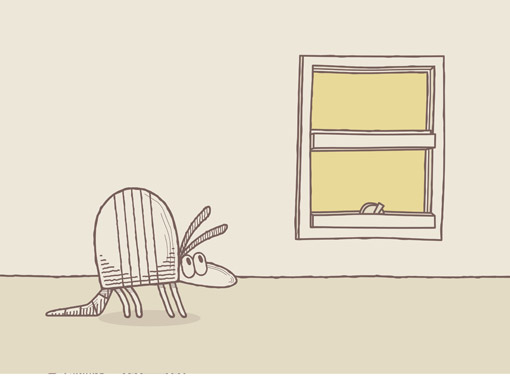
Mike Hollingsworth: The Mustache Contest had enjoyed a nice little festival run and I was approached by the producers of a new sketch comedy show on FuelTV. The show was called Stupidface and the creators were two famous skateboarders. I went in with the attitude of, “don’t fix what’s not broken.” More wiggle fish! But coming from TV animation, I was used to things being done in a certain way. I asked them, “So would I submit the character designs straight to you guys or someone at the network?” To which they replied, “Man, just do your thing.” They said the same thing about the writing and storyboards. This was unsettling. I was used to 20 people having to sign off on every little aspect of everything. I made some great – basically indy — cartoons for TV. Unfortunately, I don’t think too many folks watched the show. People really only see FuelTV in sports bars with the sound down.
Safron: A number of your cartoons have involved talking animals. If it came down to a life or death decision, would you choose armadillos or pigeons?
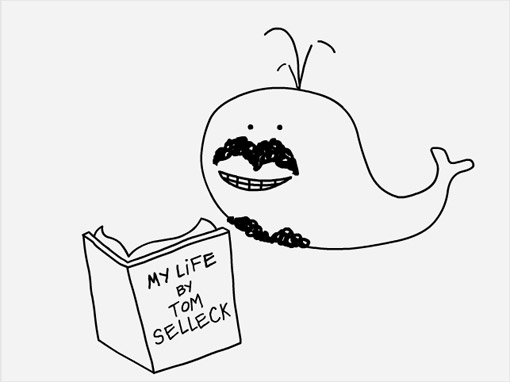
Hollingsworth: I hate pigeons! I just bought a Honda Element, I was driving it home and I hit a fucking pigeon. It cracked the grill. Plastic. There’s still feathers stuck in the crack. Meanwhile armadillos are incredibly cute. They look like scientists successfully spliced the DNA of Carroll O’Connor and a desert tortoise.
Safron: True. Any sequels in the works for past cartoons or you’ve moved onto greener animation pastures?
Hollingsworth: I’m currently working on a series of Nature Break cartoons for a big YouTube channel.
‘Dennis and Gnasher’ Goes Back Into Production
Australian production house Sticky Pictures and Red Kite Animations, a subsidiary of global media enterprise August Media Holdings, announced a new series of Dennis and Gnasher has kicked off production.
Scheduled for delivery in mid-2013, the new series (52×12 / 26 X 24) renews the partnership with rights owner DC Thomson. The series is based on the beloved comic-book characters from U.K. favorite, The Beano, which celebrates its 75th anniversary in 2013.
The co-production has been commissioned by CBBC and the Nine Network and will be produced by Sueann Smith for Red Kite Animations and Jane Schneider and Stu Connolly for Sticky Pictures.
Dennis the Menace, who first appeared in The Beano in March 1951, is the longest-running strip in the weekly comic. Dennis is the biggest menace in Beanotown, always on the hunt for fun and mischief with his loyal companion Gnasher. Together with their best friends Curly and Pie Face, Dennis and Gnasher believe the world is their oyster and much to the dismay of Beanotown’s wider community; a place where they often cause mayhem and disorder.
“Dennis and Gnasher has resonated with children and families around the world and we are excited to be a part of this continuing grand adventure,” says Donna Andrews, CEO and partner, Sticky Pictures.
“We’re delighted that Dennis and Gnasher is returning to CBBC,” says Melanie Halsall, executive producer, CBBC. “It’s a great show with fantastic characters and we are sure that this series is going to be bigger, better and more menacing than ever before.”
‘Tree Fu Tom’ Debut Scores Big on CBeebies
Animated preschooler series Tree Fu Tom is a hit in the United Kingdom, becoming CBeebies’ No. 1 show of the year since its debut last month.
The show for kids 4-6 attracted 330,000 kids ages 6 and under for its first 11 episodes, with a 25 percent audience share. It does even better with kids ages 4 and up, attracting 542,000 kids and an audience share of 3o percent for kids 4-6.
Tree Fu Tom combines innovative elements of heroic action, fantasy and magic, coupled with unique interactive physical activity. Set in an enchanted world where movement creates magic, viewers are encouraged to interact with the show through physical actions that have been devised and approved by movement development specialists to assist in the development of children. Former Doctor Who stars Sophie Aldred and David Tennant voice the lead characters Tom and Twigs.
With animation by Blue Zoo Animation, Tree Fu Tom is a co-production between FremantleMedia Enterprises and the BBC for CBeebies. The executive producers for the BBC are Jackie Edwards and Alison Stewart, and Bob Higgins and Sander Schwartz for FME. Tree Fu Tom was created and is being produced by Daniel Bays.
“The huge success of Tree Fu Tom on CBeebies gives us the best possible springboard for using FME’s global network to take the series around the world and explore a range of really exciting partnerships right across brand licensing, consumer products and more,” says Schwartz.
Sprout Brings ‘Justin Time’ to U.S. April 22
Justin Time, Guru Studio’s first original animated adventure series for preschoolers, will premiere April 22 in the United States on the Sprout channel.
Sprout has acquired two seasons of the series, which is produced by Toronto-based Guru and has aired overseas on such network as Discovery Kids Latin America and Disney Junior.
“We’re thrilled to partner with Sprout to introduce Justin Time to children and parents all across America,” said Frank Falcone, president and creative director of Guru Studio. “Sprout is a fast-growing, trusted destination for extraordinary preschool programming, and we’re proud that Justin Time will now be among this premiere channel’s standout offerings for quality children’s media.”
Justin Time features a young boy named Justin, who embarks on imaginary adventures with his make-believe friends Squidgy, a shape-shifting piece of yellow clay; and Olive, the group’s trusty navigator and guide. Together, the intrepid, high-spirited trio takes off on bite-size historical adventures.
In addition, the Justin Time web site, co-produced by Zincroe and Guru Studio, invites preschoolers and their families into Justin’s world to extend the fun and further the pro-social messages of the series with online scroller games and apps.
Guru Studio will follow up on the Sprout deal with a U.S. licensing program for Justin Time, with deals expected to be announced later this year.
Justin Time was created by Brandon Scott and developed by Frank Falcone, Mary Bredin and Scott. Guru Studio worked previously on the Emmy Award-winning preschool series, The Backyardigans, as well as Guess with Jess and Babar and The New Adventures of Badou.
‘Regular Show,’ ‘Danny Phantom,’ Elmo Hit DVD
Mordecai and Rigby are finally arriving on DVD with the release this week of Regular Show: Slack Pack (Warner Bros., $14.97), collecting 12 episodes of the series from the first and second seasons of its run on Cartoon Network.
Meanwhile, Danny Phantom, Season 2, Part 1 (Shout! Factory, $19.93) gives fans a chance to revisit Butch Hartman’s popular adventure series.
Also arriving this week are Jake & the Never Land Pirates: Peter Pan Returns (Disney, $19.99), featuring the special episode of the hit Disney series, and Wow Wow Wubbzy!: A Wuzzleburg Tale (Anchor Bay Entertainment, $14.98).
Fans of Sesame Street’s ticklish red monster get a double dose, with the release of the live-action documentary Being Elmo: A Puppeteer’s Journey (Docurama, $29.95) as well as Big Elmo Fun (Warner Bros., $14.98).
On the anime side, there’s Pokemon: The Movie — Black: Victini & Reshiram/White: Victini & Zekrom (VIZ Media, $19.97).
And for the preschool set, there’s Angelina Ballerina: Ultimate Dance Collection (HIT Entertainment, $19.98) and Fireman Sam: Rescue on the Water (HIT Entertainment, $19.98).
Animation Block Party Spotlight on ‘Ledo and Ix’s’ Carmichael
Animation Block Party (www.animationblock.com) is the premier animation festival of the East Coast. In this interview series, the founder of ABP, Casey Safron will be introducing Animation Magazine readers to some of the award winning animators who have screened at past ABP festivals.
Emily Carmichael’s recent live-action short, The Hunter and Swan Discuss Their Meeting, screened at the 2011 Sundance Film Festival and ABP has been lucky enough to show some of her past animated shorts from The Adventures of Ledo and Ix series. You can check out Emily’s films at http://kidcandrive.com/
Emily Carmichael: First off, I owe the fans of Ledo and Ix a bit of an explanation for the long hiatus the show has taken. Fans! I get your e-mails! They warm my heart. I have been hard at work on a live-action feature called Arrow. There definitely IS a second season of Ledo and Ix coming. I’m deciding where it should air, and a few other details. There will be a Kickstarter for it in the near future!
Casey Safron: So, how has your animation process changed since the first Ledo/Ix film in 2008?
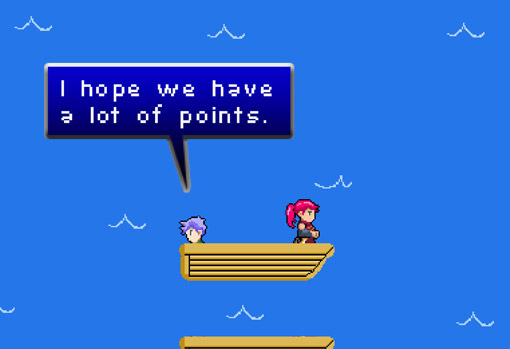
Carmichael: You know, it actually hasn’t. I mean, except in the nerdiest of ways, like now I make everything a movie clip instead of an animated psd (Flash animators know what I’m talking about). What *has* changed how I get from Flash to Quicktime, which used to be sort of — what’s the word I’m looking for — nightmarish. When the first Ledo and Ix got into Slamdance it took me two days of trial and error just to print a tape.
Safron: The style of the Ledo and Ix films parody classic video games – have you ever considered making an actual video game starring Ledo and Ix?
Carmichael: Yes! Yes. I have talked intermittently to people about creating a game of Ledo and Ix. I think it could be really exciting!
Safron: You’re also a live-action filmmaker, do you have a preference of medium or do you decide on what technology to use based on the story you’d like to tell?
Carmichael: Well the main difference between Ledo and Ix and my live-action films is one of scale. I animate Ledo and Ix by myself, with occasional help from another, better animator (Steve Valdez) and then composers and a sound mixer join in at the end to determine the sound of the episode. (Chris Thomas, Andrea Mazzariello, Mike Gamble and Laura Sinnott have all contributed.)
It can be nice working by yourself, just having total control and never having to ask favors from anyone. (Except I guess from everyone I just mentioned, to whom I owe all my various limbs.) But when you want something from one of the ACTORS you don’t have to ask. There’s never like “oh, I know it’s getting cold but can we do one more take of you stabbing that dragon.”
Safron: Thank you, Emily — looking forward to more Ledo and Ix films in the near-ish future.
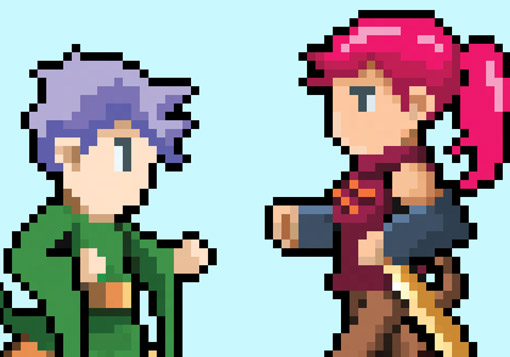
A2E2 Goes Transmedia With ‘Stan Lee’s Mighty 7'
A Squared Elxsi Entertainment, a joint venture between A Squared Entertainment and Tata Elxsi Ltd., has struck a deal to develop Stan Lee’s Mighty 7 superhero property to multiple formats and platforms in animation and live-action.
The deal is a partnership between A2E2, Lee’s POW! Entertainment and Archie Comics.
Stan Lee’s Mighty 7 introduces the famed comic-book creator’s new group of extraterrestrial super heroes and also sees Lee — co-creator of such iconic Marvel characters as Spider-Man and the X-Men — appear alongside his new creations. The deal will see the development of transmedia content based on the new characters.
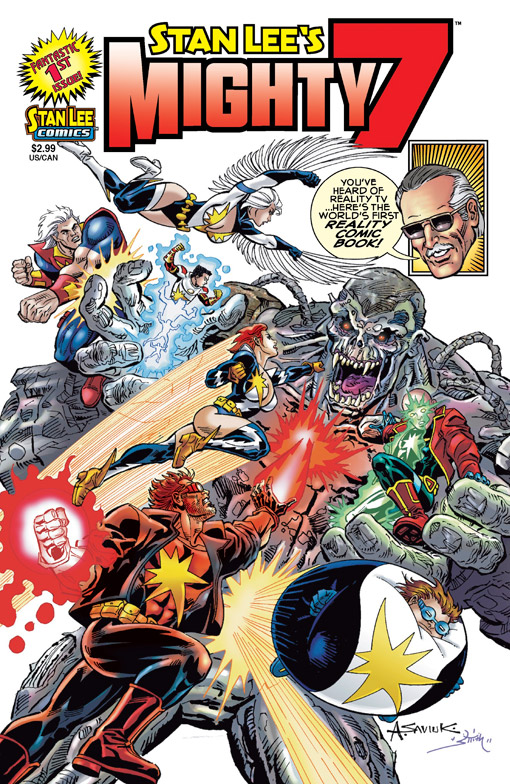
In addition to the production of original animated and live action programming, A2E2 will lead the global licensing program for the property, with new toys, digital and entertainment products, accessories, apparel, books and additional branded merchandise a priority.
“We’re very excited at the prospect of launching Stan Lee’s new creations from the comic book into the digital domain,” says Andy Heyward, A2E2 founder and co-president. “Today’s multiformat, multichannel entertainment world offers us a unique opportunity to create a truly immersive storytelling experience fit for the next generation of superheroes – including Stan himself!“
The deal was announced from the MIPTV 2012 market, taking place this week in Cannes, France.
Kidvid Site Kidobi Adds Animasia’s ‘ABC Monsters’
Malaysia-based Animasia Studios has granted digital preschool platform Kidobi the subscription video-on-demand rights for the animated preschool series ABC Monsters in Canada and the United States.
The educational preschool series will be available to subscribers on Kidobi.com later this spring.
“The deal with Kidobi is a great step forward for Malaysians penetrating the new media and online content market,” says Edmund Chan, CEO of Animasia. “IPTV is an important untapped market and it was timely that our contents now are available on Kidobi’s platform.”
In the series (22 x 22 mins.) 26 cuddly ABC Monsters live within the walls of Capital Castle. The ABC Monsters are curious and happy creatures and often wander off from Alphabet Gardens to try new and fun things, invariably getting themselves lost in the process.
The agreement builds on several major announcements from both companies in the past weeks. ABC Monsters is the most-recent content acquisition by Kidobi, and Animasia Studio has also recently announced that its animated sports comedy series Bola Kampung will be developed into a feature film to be released at the end of 2012.
‘Titans,’ ‘Mirror Mirror’ No Match for ‘Hunger Games’
Perseus and Snow White were no match for Katniss Everdeen, as The Hunger Games held on to the top spot against the VFX-heavy sequel Wrath of the Titans and Tarsem’s Mirror Mirror.
Lionsgate’s Hunger Games earned $61 million in its second weekend at the domestic box office, pushing its total to just past the quarter-billion dollar mark. The movie, based on the Suzanne Collins novel, has so far pulled in $113 million overseas for a $364 million worldwide total.
Warner Bros.’ Titans, meanwhile, debuted with $34 million, a drop from the $61 million opening of 2010’s Clash of the Titans. The film did much better abroad, taking in $78 million overseas for a $112 million worldwide opening. Mirror Mirror, from Relativity, came in third with a $19 million debut, adding $11 million in overseas ticket sales.
Illumination/Universal’s The Lorax added $8 million in its fifth weekend of release to its domestic total, which now stands at $189 million, with $37 million earned overseas. Disney’s John Carter came in sixth with a $2 million weekend, for a $66 million domestic total offset by $188 million earned overseas for a $254 million worldwide total
Journey 2: The Mysterious Island came in 10th for the weekend with $835,000 in ticket sales. It’s on the verge of the century mark domestically with $98 million. Its overseas total of $214 million brings the Warner Bros. release to $312 million overall. Fox’s Alvin and the Chipmunks: Chipwrecked added $220,000 to its total, which now stands at $132 million domestic and $205 million foreign for $337 million overall.
And Studio Ghibli’s The Secret World of Arrietty made $93,000 in its seventh weekend of release for an $18 million domestic run. The film has made $126 million overseas for a $144 million total.
La Dolce Vita Animata
Indie animation producers in Italy continue to deliver the goods despite tough financial challenges and the slow growth of revenue from multimedia projects.
A lot has happened and evolved in the Italian animation business since the heydays of Bruno Bozzetto’s Allegro Non Troppo in the mid-1970s. While the state-funded RAI TV continues to be one of the key animation producers in the country, other independents such as Atlantyca, Rainbow, Misseri and Gruppo Alcuni have emerged as forces to be reckoned with, despite their never-ending battle to secure financing for their projects.
Atlantyca Entertainment, the studio behind the popular Geronimo Stilton series, is bringing several new shows to the MIPTV market in France in April. As Caterina Vacchi, the head of the company’s animation department and exec producer, explains, “The economic crisis has affected Italy and its animation industry as in all the countries in the world,” she says. “If the presence of a lot of new children’s channels is very good news, it’s also true that our industry is still adjusting to this new reality. Because Italian producers don’t receive any real government funding or tax credit system, we are financing series with the aid of broadcasters’ investment. If more kids’ channels are involved in co-producing the shows, that would help our industry grow and become more competitive in the international field.”
Among the new offerings Atlantyca has at the market is Ulysses Moore (26 x 22), a live-action/animation hybrid show which follows the supernatural adventures of twins Jason and Julia and their best friend Rick as they try to save the world from the dark forces of a parallel universe. Also on tap is Bat Pat, a 52 x 11 animated sitcom about a talking bat and the misunderstood monsters of the town of Fogville. Both shows rely on multiplatform ventures and new apps to increase brand awareness even before their launch on TV.
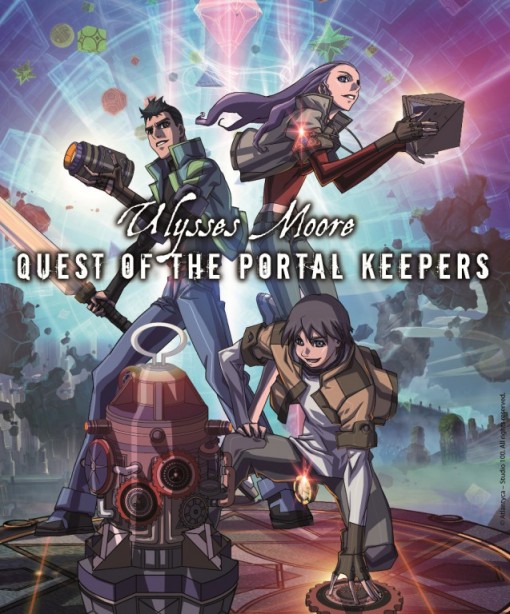
“Our key strategy has been developing animated shows based on our publishing properties,” says Vacchi. “This has allowed us to start from a globally well-known property, explore the brand awareness and create new business opportunity at any market level. We’re not going to change our policy completely, but we might decide to create a new property from scratch that can be launched on different media and platforms at the same time.”
Treviso-based Gruppo Alcuni is another strong producer of animated content. Since the launch of its animation division in 1999, it has produced local hits such as Pet Pals and Leonardo, and runs a special theme park (The Talking Tree Park) devoted to its popular animated properties. The studio is currently co-producing the fifth season of Pet Pals with Rai Fiction (10 episodes of the new season will be in stereoscopic 3-D), as well as a dialogue-free Flash-animated series called Symo & Rose and a CG-animated Pet Pals movie sequel titled Nameless’ Adventures in Wonderland, also in stereoscopic 3-D.
“Apart from Gruppo Alcuni, there are only a couple of other Italian companies that are competing in the TV market, but also in the publishing, merchandising and licensing areas,” says company CEO and founder Francesco Manfio. “Our biggest challenge comes from large multinationals which have found very receptive ground in Italy for their brands.”
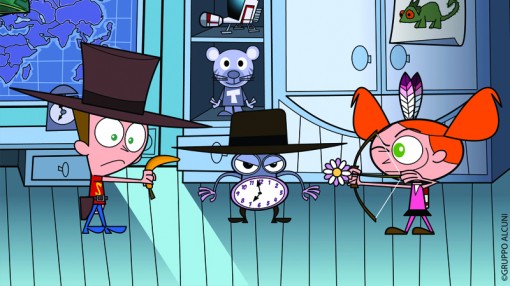
In order to face the challenges of the future, Manfio says his studio wants to steer all the processes connected to the animation sector and devote particular attention to new technologies.
“We’re studying new projects that can be launched, at least initially, separately from TV broadcasts,” he says. “For example, our new show Symo & Rose was created as an interactive project first and is now being developed as a TV series. In the past two years, we’ve created several mobile applications based on our TV shows, and we intend to continue to grow in that direction.”
He also points out that because the Italian government doesn’t offer any financial aid, an unfair balance has been created in favor of other European competitors, which do receive backing from their government. However, the Gruppo Alcuni theatrical projects are able to use a very small fund devoted to film production.
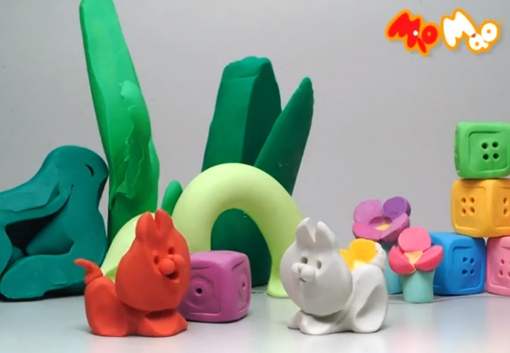
Misseri Studio is another example of the small to mid-sized houses that have continued to weather the tough financial climes in the country since the 1980s. Founded by claymation pioneer Francesco Misseri (Mio Mao), the studio partnered with Sesame Workshop to create the award-winning stop-motion series Bert & Ernie’s Great Adventures. In addition to producing two new seasons of Mio Mao and Pozzie, a new NHK co-pro which employs water-animation technique, it’s teaming up with Sony Creative Products and Rai Fiction to produce Mofy, an animation series made with “cotton puffs,” based on the picture books by Japanese artist Aki Kondo.
“Italy has a tradition in children’s animation that has grown and achieved significant success both at home and abroad,” says Sandro Polini, Misseri Studio’s head of business development. “Nevertheless, I think that many Italian companies should still develop a more ‘international approach’ to our business, both in terms of business models and of the kind of productions. This does not mean to lose our identity or to produce standardized programs, but to use our own traditions and style in a way that can be understood and appreciated by an international audience.”
Strong Like Gladiators
With popular TV series such as Winx Club, the live-action/CG-animation hybrid show Mia and Me and the upcoming 3-D CG animated movie Gladiators of Rome (with a reported a $55 million dollar budget), Rainbow S.p.A. continues to play a major role in the Italian animation industry. Founded in 1995 by Iginio Straffi, the studio continues to produce additional seasons of its hit brands for both TV and online consumption.

Among the challenges seen by Straffi are the fragmentation of the market in Europe and the loss of TV audiences to the web and other new media platforms.
“Our priority is to anticipate the changes that are happening in our world and to adapt the production strategy accordingly,” says Straffi. “In addition, restrictions in advertising targeted to kids is influencing the time the broadcasters dedicate to kids’ programming which makes the competition for on-air presence even harder.”
“The limited number of buyers is a major concern for us,” says Alberto Genelettie, exec producer at T-Rex Digimation, the six-year-old studio behind shows such as the preschool toon Dixiland, the popular Gino the Chicken (with Rai) and the cross-platform project Arthur & Kiwi. “Digital channels have increased in number in the last few years, but they are dominated by the power of foreign cartoon brands. We plan to leverage new digital distribution channel to reach a larger audience and create new revenue opportunities. We also believe that technology is a valuable tool which reduces production costs and opens up new distribution venues. However, it’s just a tool that cannot replace creativity and talent.”
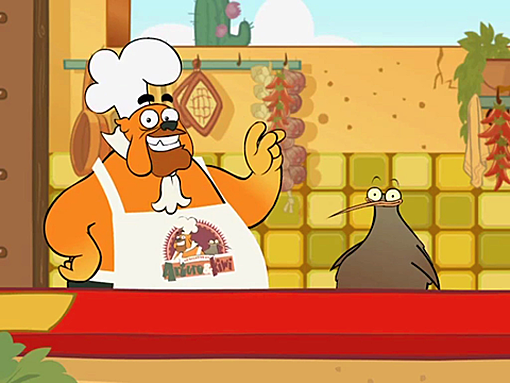
Like their counterparts in Europe and the U.S., some Italian producers are continuing to join with new international partners in Asia to make their projects possible. One example is Lastrego & Testa Multimedia, which is co-producing its 26 x 22 3-D show Marco Polo with Chinese public TV’s CCTV and Rai Fiction.
“We are expanding our horizons with Marco Polo, which targets eight- to 12-year olds,” says Francesco Testa, the studio’s president and CEO. “We are very proud to be partnering with a prestigious Chinese partner and are expecting great results both creatively and commercially.”
By all accounts, the great Italian talent for creative thinking and centuries-old artistic traditions continue to move forward in the animation field, regardless of the slings and arrows of today’s financial climate. Speriamo così (we hope so)!
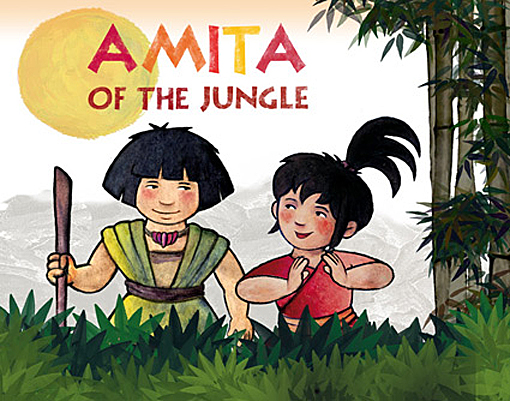
10 Shows to Write Home About
The beginning of April may signal the arrival of spring in the natural world, but for TV execs and animation producers, it only means one thing: Yup, it’s time to fight the crowds and sell your goods at the MIPTV content market (April 1-4) in Cannes. Here are some of the new animated shows that will be looking for buyers and producing partners at the mart this year:

| Show: | Dude, That’s My Ghost |
| Produced by: | Gaumont Alphanim, Disney XD, EMEA; Orange, France |
| Created by: | Jan Van Rijsselberge (Robotboy, Santa’s Apprentice) |
| Package: | 52 x 13 |
| Target Audience: | 6-12 |
| Synopsis: | This comedy series follows the adventures of 11-year-old Spencer who has to adjust to life with his new buddy/guardian, the ghost of a flamboyant guitar-playing rock star, when he moves to Hollywood with his family. (The series was formerly known as Spencer’s Ghost.) |
| Type of Animation: | Digital 2D, done with Toon Boom Harmony. The producers opted for this software as the character design involves a lot of detail in the clothing and style of each character. “We wanted the characters to look as though they had chosen their own outfits and not been dressed by their parents,” says Alphanim’s creative director and exec producer Heath Kenny. “Also we really wanted to have the flexibility to keep a lot of fun squash and stretch in the more cartoony characters like Billy Joe Cobra the Ghost.” |
| Selling Points: | “While this show may seem a buddy comedy like many others at first glance, that’s where the similarity ends,” notes Kenny. “Thanks to the vision of the director and the support of the dedicated team at Disney XD, in both development and current series, we have two very memorable characters in a world that unites a strong sitcom feel with classic cartoon comedy. As visual or dialogue-driven gags can often be culture specific, DTMG has a solid grounding in character-driven comedy that we believe is truly international.” |
| Website: | www.alphanim.com |

| Show: | Fungi |
| Distributed by: | awol |
| Production Partners: | Storfisk, TV3, Top Draw Animation |
| Type of Animation: | 2D Flash |
| Created by: | Veronica Lassenius |
| Package: | 26 x 7 |
| Target Audience: | 6-11 |
| Synopsis: | This charming show features the adventures of fantastical Frida, Max the musician and their oh-so-interesting neighbors, the Undergrounders. Living in an apartment block called Fungihouse, these mysterious neighbors never fail to fire the imaginations of Frida and Max, who are astute observers of comings and goings and never met a mystery they didn’t love. |
| Selling Point: | “The fantastic universe of Fungi brings an optimistic view of life in a community of neighbors every child can relate to,” says creator Veronica Lassenius. “The way Frida and Max solve everyday mysteries invites children to be creative, observant and build their own opinions about their environment. And all that is lots of fun!” |
| Website: | www.awolanimation.com |

| Show: | Bola Kampung Extra |
| Produced and created by: | Animasia (Malaysia) |
| Type of Animation: | 3-D CG |
| Package: | 8 x 3 |
| Target Audience: | 6-12 |
| Synopsis: | This new offering is the spinoff of the studio’s animated feature Bola Kampung: The Movie. These comic short-form toon revolves around the misadventures of a young group of soccer players in an underdog school team. |
| Selling Points: | “The show is dialogue-free, fast paced and funny,” says Animasia’s managing director Edmund Chan. “There’s a big demand in the market right now for comedy shows, and this show will be best to broadcast during the Euro 2012 Football season. Besides saving on dubbing costs (non-dialogue), there are also sponsorship opportunities which broadcasters can increase revenue by promoting to advertisers. Our post team can also insert product placement shots for broadcasters to sell to potential advertisers.” |
| Delivery date: | May 2012, in time for European 2012 soccer season |
| Website: | www.bolakampungmovie.com |

| Show: | Robin Hood |
| Produced and created by: | DQ Entertainment, Method Animation, ZDF Enterprises |
| Type of Animation: | Stereoscopic 3-D CG |
| Package: | 52 x 11 |
| Target Audience: | 6-12 |
| Synopsis: | The adventures of a young Robin Hood and his friends in the Sherwood Forrest as they band together to fight the evil plans of the notorious Prince John. |
| Selling Points: | “Robin Hood is one of the most-loved characters of all time and a cult hero that children have grown up reading about for ages all over the world,” says DQ Ent.’s chairman and CEO Tapaas Chakravarti. “We’ve always believed that high quality animated IPs that have global appeal will have immense potential for broadcast, merchandising and licensing. This 3-D series will center on a never-before-seen, 10-year-old version of the hero and his Band of Merry Friends. The CG-animated characters are very endearing and will surely captivate and engage our young audiences with their pranks. The show will be an exciting mix of fantastic action, magic and friendship set against the backdrop of the lush and mysterious Sherwood Forest.” |
| Website: | www.DQEntertainment.com |

| Show: | Trucktown |
| Produced by: | Nelvana Studio |
| Based on: | The book series from award-winning author Jon Scieszka, that has sold over one million copies. |
| Type of Animation: | CG |
| Target Audience: | Preschool |
| Synopsis: | The action-packed show stars Jack Truck, Dump Truck Dan and Gabriela Garbage Truck and their pals as they rambunctiously roar, romp and crash their way through their hometown of Trucktown. This group of friends just wants to rev-up their engines and smash their way through anything. So pump up your tires and roll on over to join in the fun! |
| Selling Points: | “Trucktown will follow the lead of the first book in the series titled Smash Crash,” says Irene Weibel, Nelvana and Corus Kids’ VP of international production and development. “We see Trucktown as a true boys preschool show: It will be rambunctious and revved up and celebrate boys! Each episode will focus on play and games and result in physical, rough and tumble fun. Here are a couple of signs you will see in Trucktown: ‘Bumping and Smashing Not Prohibited’ and ‘Please Drive on the Lawn.’ We are pleased to have award-winning author Jon Scieszka on board as we develop Trucktown, providing us with his input about the characters, stories and designs.” |
| Website: | www.nelvana.com |

| Show: | Florrie’s Dragons |
| Produced by: | Studio 100 Media |
| Created on: | Wish Films, U.K.; Clockwork Zoo and Studio100 Animation |
| Animation produced by: | Clockwork Zoo, South Africa |
| Type of Animation: | 2D, cut-out style |
| Package: | 52 x 10 |
| Target Audience: | 3-6 |
| Synopsis: | This vibrant, preschool show about friendship, community, compassion, creativity and positive values is based on a book series by children’s author An Vrombaut (64 Zoo Lane). It centers on little Princess Florrie who lives in a castle, and her best friend Dear Dragon, and their magical adventures with Toot Toot the Musical Dragon, Splish Splash the Magical Water Dragon, Zoom Zoom the Flying Dragon and the Dancing Dragonettes. |
| Selling Points: | “Florrie’s Dragons is a warm-hearted comedy for a very young audience with a unique look that makes no secret about its picture book origins,” says Patrick Elmendorff, Studio100’s managing director. “It’s filled with everything that is truly wonderful about childhood. The show draws children into a magical world where every day is special and all the stories have strong ties with real life situations and experiences. We are delighted to have Florrie’s Dragons in our portfolio. There is something so unique about An Vrombaut’s books, and the series reinforces to us our true vocation as children’s TV makers: to tell stories and to tell them the way children like it.” |
| Website: | www.studio100media.com |

| Show: | Teenage Fairytale Dropouts |
| Produced by: | Anima Estudios, SLR Productions, Home Plate Ent., Telegael |
| Distributed by: | CCI Ent. |
| Type of Animation: | High Def, Flash 2D |
| Package: | 52 x 11 |
| Target Audience: | 6-11 |
| Synopsis: | This charming toon centers on the next generation of fairytale characters, who really don’t want to follow in their parents’ footsteps. Jeremiah, the son of the Giant from Jack and the Beanstalk, is vertically challenged and hates stomping. Trafalgar, one of Merlin’s many nephews, is likely to turn himself into a goat, and Fury, Tooth Fairy’s daughter, hates to deal with children’s teeth. |
| Selling Points: | “Teenage Fairytale Dropouts is a show with three unique heroes who are truly best friends,” says José Carlos García de Letona, Ánima Estudios’ exec VP. “What gives the series its comedic edge is its focus on the offspring of famous fairytale characters and the challenges they have making their way at FairyTale High School without walking in their parents very large (as in giant), or very traditionally magical footsteps.” |
| Website: | www.ccientertainment.com |

| Show: | Jade Armor |
| Produced by: | TeamTO, Gamania Digital Ent. and Sofa Studios |
| Distributed by: | CCI Ent. |
| Type of Animation: | CG |
| Package: | 53 x 13 |
| Target Audience: | 6-11 |
| Synopsis: | This action comedy series centers on a young boy named Yang who gains special powers thanks to an ancient suit of armor and with the aid of his friend ChoYo and the support of magical Beasticons, he learns to fight the strange minions sent by the evil Dark King. |
| Website: | www.teamto.com |

| Show: | Fugget About It |
| Produced by: | 9 Story Entertainment, Darius Films, Teletoon |
| Created by: | Nicholas Tabarrok and Willem Wennekers |
| Developed by: | Jeff Abugov (Two and a Half Men, Roseanne, Cheers) |
| Package: | 26 x 30 |
| Style of Animation: | 2D Digital |
| Target Audience: | Over 18 |
| Synopsis: | This new primetime animated sitcom follows the misadventures of former New York mob boss Jimmy Falcone and his family, who are forced to enter the witness protection program and move to small-town Canada. After Jimmy is asked by his associates in the Gambini crime family to whack his good old Uncle Cheech, Jimmy goes to Don Gambini to plead his uncle’s case. When nothing comes of it, he politely throws the mob boss out of a 19th story window. Now with the mob out to kill him, Jimmy has no choice but to turn to the Feds, who move the family to cold, snowy, boring Regina, Saskatchewan. |
| Selling Points: | “What sets the show apart from other toons on the market is that it is a great fish-out-of water story,” says creator/exec producer Willem Wennekers. “Our heroes are part of a tough New York mob family in a particularly gentle part of Canada. Not only do they culturally clash with their environment, but they have to maintain a secret identity which, if revealed, could mean they’d be dead. That sense of jeopardy is what adds another level of excitement (and humor) to Fugget About It.” |
| Premiere: | Fall 2012 on Teletoon at Night; English/French. |
| Website: | www.9story.com |

| Show: | Max Steel |
| Produced by: | Mattel and Fremantle Media Ent. |
| Animation studio: | Nerd Corps |
| Distributed by: | Fremantle Media |
| Package: | 26 x 20 |
| Type of Animation: | CGI |
| Target Audience: | Teen/tween boys |
| Based on: | The Mattel character and property of the same name, first introduced in 1999. |
| Synopsis: | This high-octane, action-packed superhero series follows the epic adventures of Earth-bound teenager Maxwell McGrath and his out-of-this-world friend Steel. The mismatched duo must overcome comedic trials and tribulations toward each other in order to create a heroic turbo team. Once combined together, Maxwell and Steel serve to protect Earth from all manners of mayhem, monsters and extraterrestrial invasion as the galaxies greatest new super-hero, Max Steel. |
| Selling Points: | As Sander Schwartz, FME’s president of kids and family entertainment, tells us, “Max Steel is an iconic boys’ action adventure property, and we are very excited to partner with Mattel on this cutting edge series. With the advances in CGI and other audio visual technologies available today, this show will have eye-popping animation, stunning visuals and great music, I am confident that Max Steel will soar to more heroic heights than ever before. Max Steel is a strong addition to our growing portfolio of family entertainment brands and further emphasizes FME’s mission to bring quality content to the teen market.” |
| Premiere: | The series will launch in 2013 to core kids audiences on Cartoon Network channels throughout Latin America, including Mexico, Brazil, Argentina and Chile. |
| Website: | www.fremantlemedia.com |
20 Tips on How To Pitch Your Toon to Network Execs!
1. Watch the programs on the channel you are pitching to.
Do your homework!
2. Character, character, character.
3. Beyond the pitch, know what the show is and where it is headed.
4. Don’t pitch anything you are first going to apologize for; “This probably isn’t right for you, but…”
5. Be passionate about what you are pitching.
6. Be descriptive in your characters and stories. Know your characters and the situations that generate the stories in your series.
7. Pitch with art. It helps establish the characters and the tone of the project you are pitching.
8. Be confident!
9. Please don’t pitch the project while dressed in a costume that will deter from what you are pitching.
10. Be able to pitch out the concept in a few sentences.
11. Be on time to your meeting.
12. Humor is always appreciated.
13. Please, don’t pitch us in the restroom.
14. Ask questions to find out what the broadcaster needs.
15. Be nice to the entire acquisitions team! We all work together.
16. Be patient. Allow us time to properly review the pitch with our team.
17. Please don’t pitch us the same project every time.
18. Don’t give up on your project or the broadcaster you are pitching to. Chances are the project isn’t the right fit for us, but maybe your next one will be.
19. Be professional and establish good relationships. Talk to everyone!
20. Look at the big picture. Be open to partnerships that could help get your project made.
Karen Miller is the director of acquisitions and co-productions at Disney Channels Worldwide. Prior to her post at Disney, she oversaw the development, production and distribution of Atlantyca’s hit animated series Geronimo Stilton and worked as animation associate producer on The Simpsons Movie. She was also the VP of property acquisitions at Warner Bros. Consumer Products and a producer for Warner Bros. Television.















